

Welcome


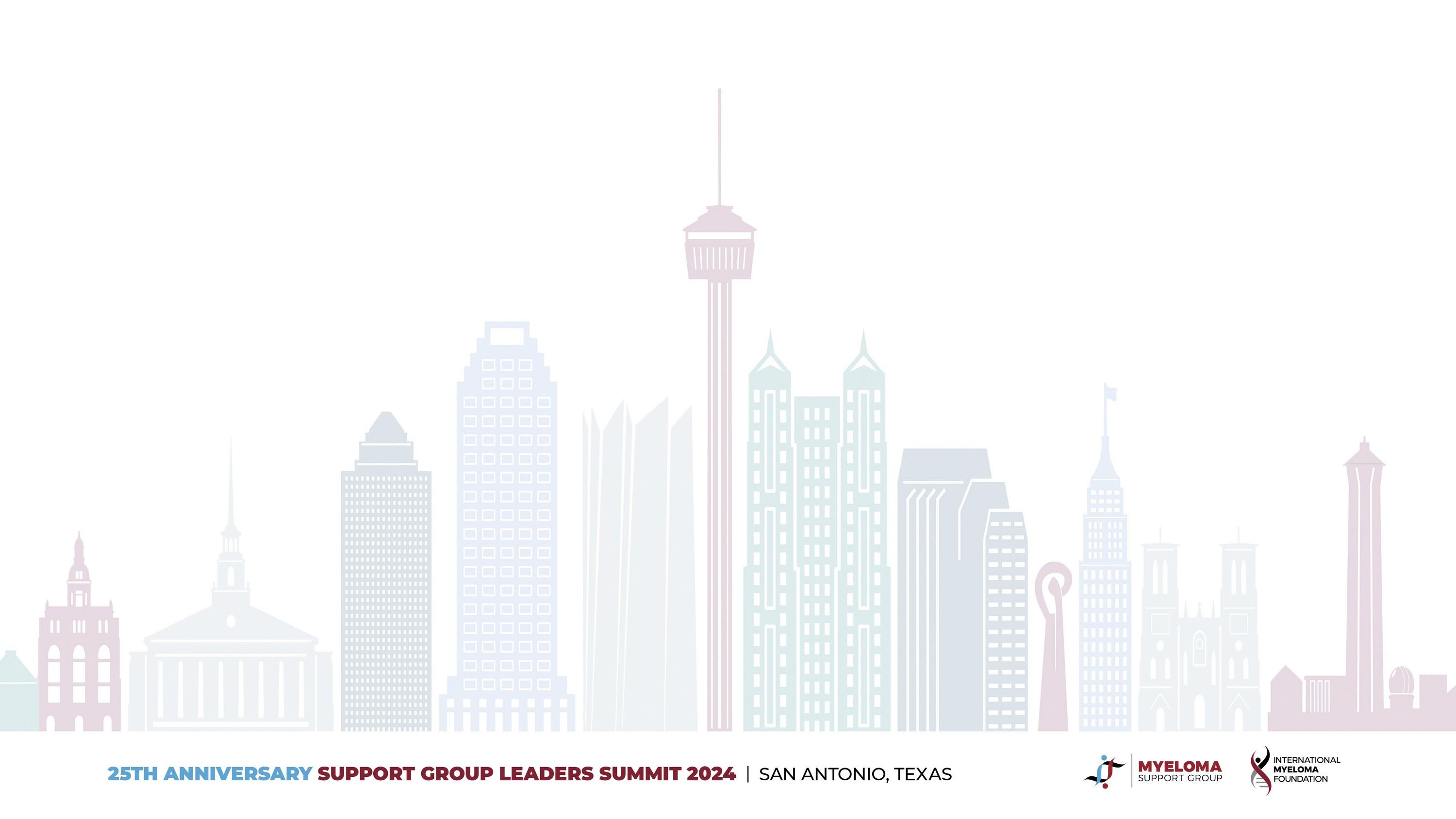
Robin Tuohy Vice President, Patient Support


Thank you to our Donors

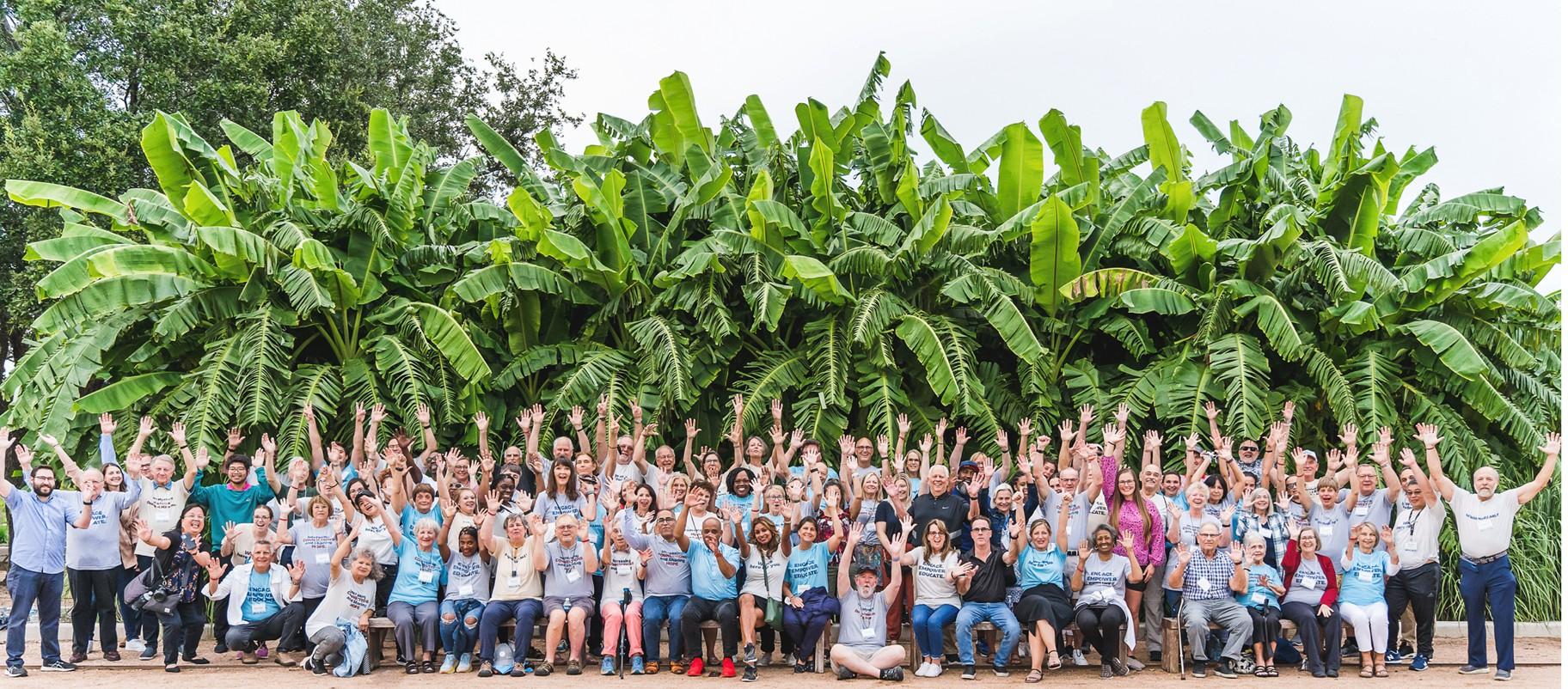
2023 Summit: Empowered, Engaged & Educated!










25th Anniversary Support Group Leaders
Summit This year, there are 98 Support Group Leaders in attendance representing 74 Support Groups.

We are thrilled to welcome 32 first-time attendees!
record!! And welcome back 66 returning leaders!


Please use this QR code for Friday's


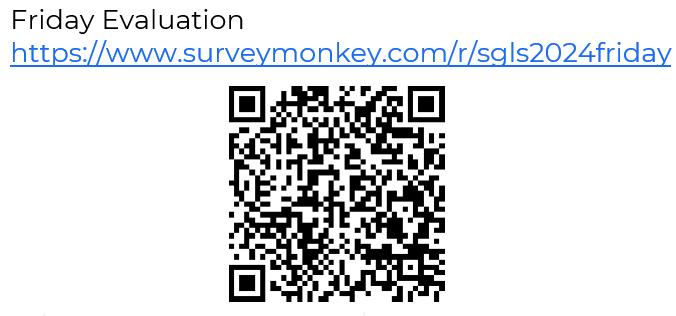

Let's kick off this Celebration with a special video


Empowering the Myeloma Community:

A world where every myeloma patient can live life to the fullest, unburdened by the disease

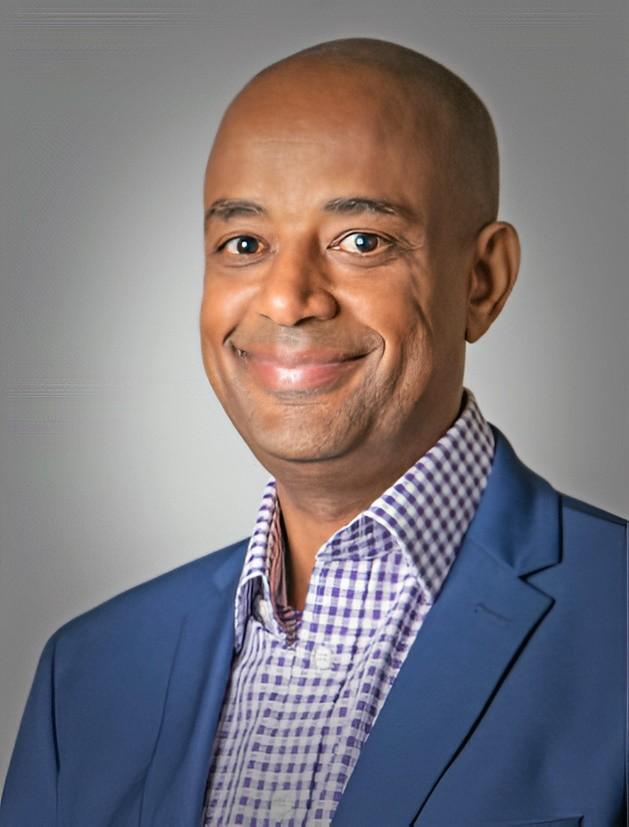
Yelak Biru
IMF President and CEO
28 Year Myeloma Patient








Find a Local Support Group







Origin Story

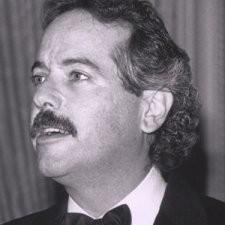
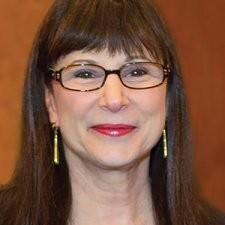



Brian Novis Susie Durie Brian G.M. Durie, MD
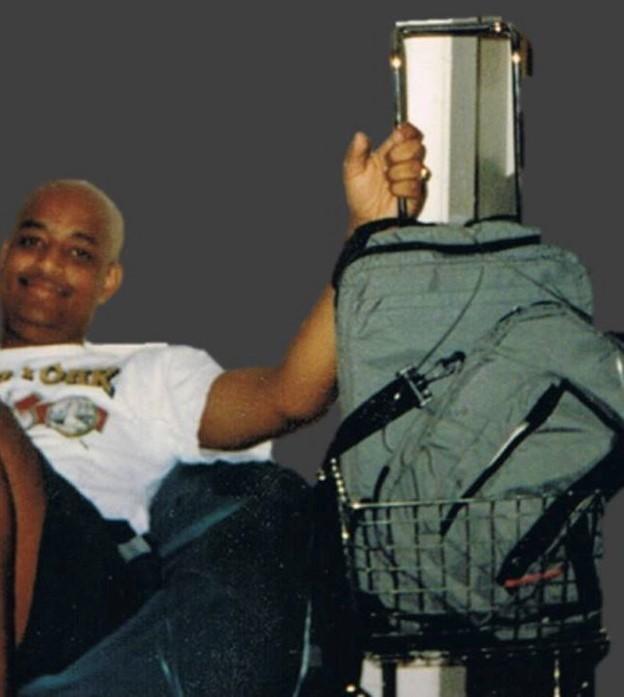
In 1995, Yelak was diagnosed with Multiple Myeloma




A day in the life of a myeloma patient
Diagnosed with myeloma at age 25 in 1995
Given 2-3 years to live
Told I will be dead before the age of 30
28 Years ago!

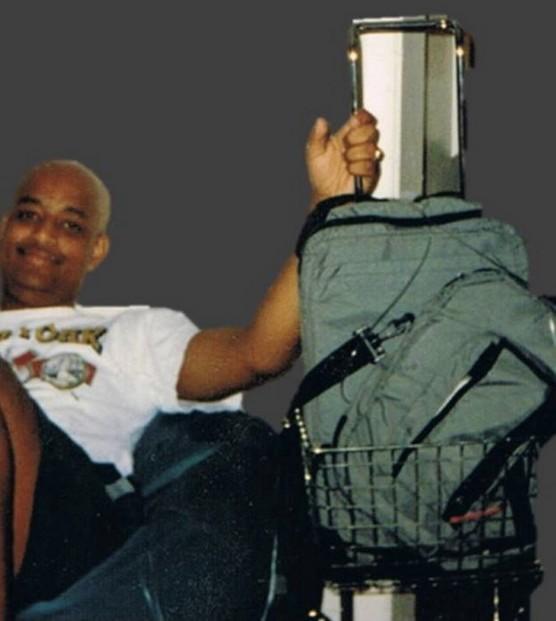

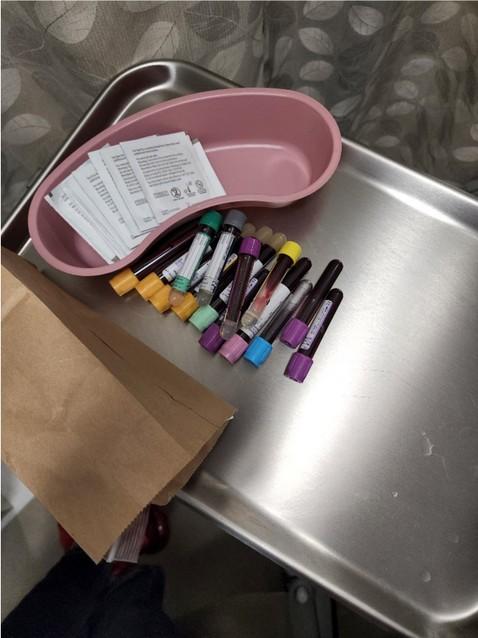
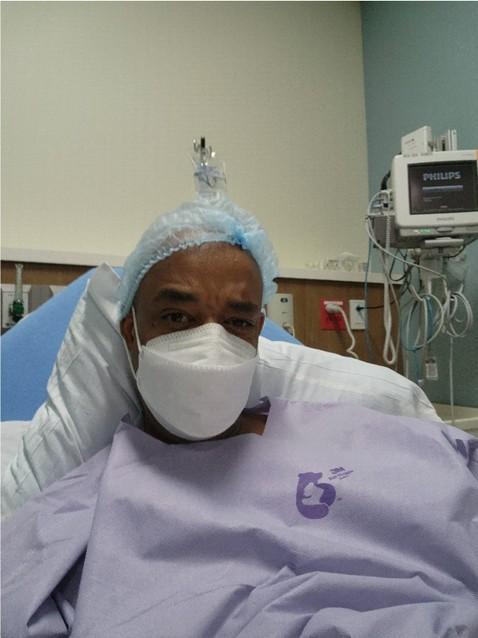








A day in the life of a myeloma patient
Diagnosed with myeloma at age 25 in 1995
Given 2-3 years to live
Told I will be dead before the age of 30
28 Years ago!




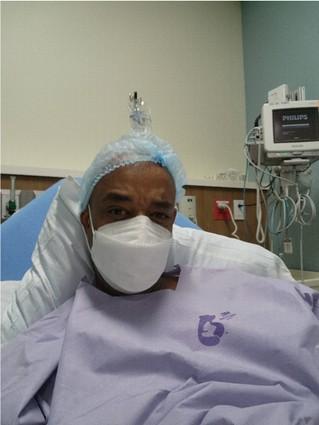



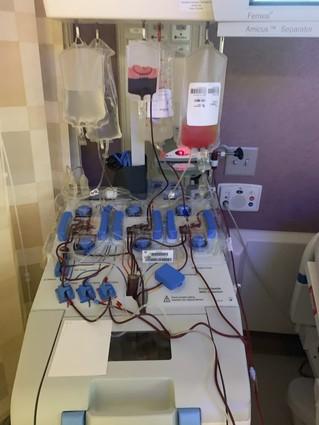


Treatments I have been on



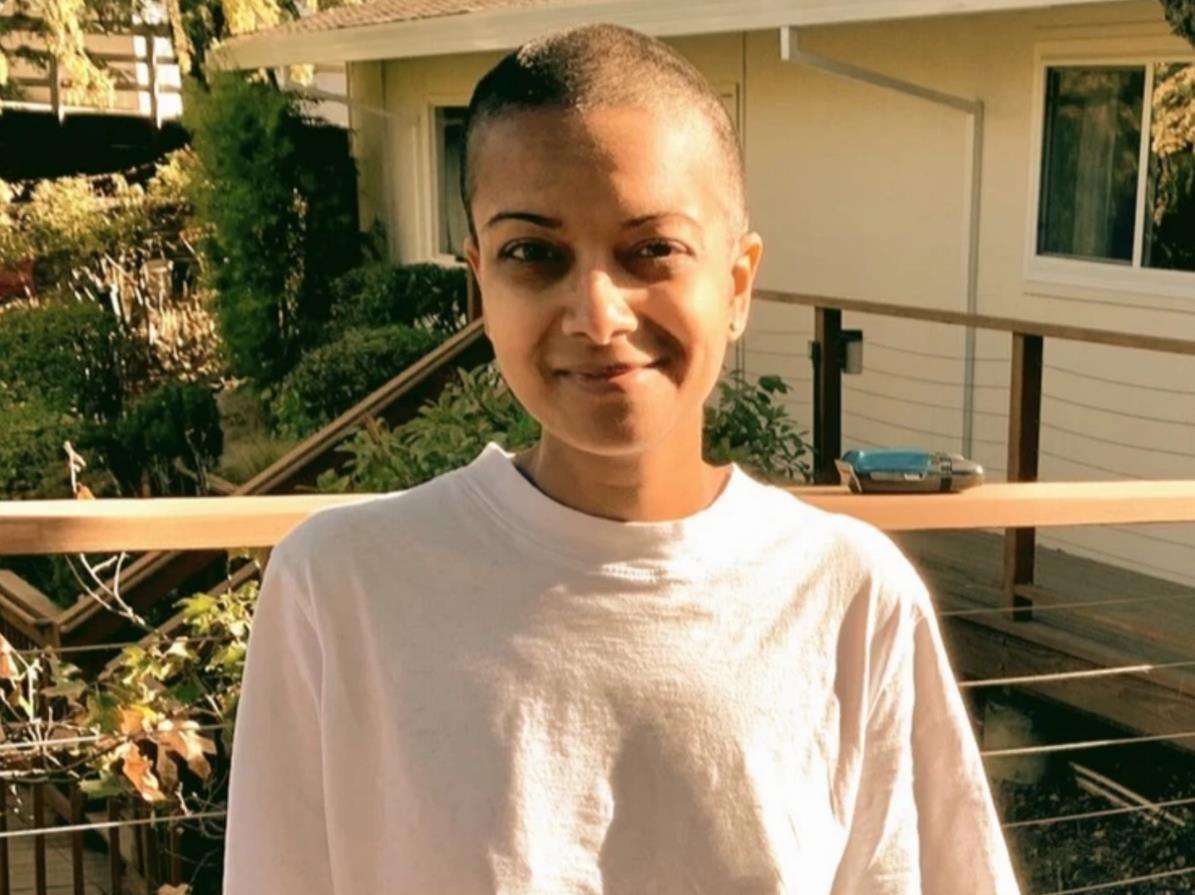
In 2021 Poornima was Diagnosed with Multiple
Myeloma

January 29, 2021
MRI reveals cancerous lesions of unknown origin in spine
Unclear if I have 3 months, 1 year, 5 years
Body, mind and soul in turmoil!
She had many questions!

January 29, 2021
MRI reveals cancerous lesions of unknown origin in spine
Unclear if I have 3 months, 1 year, 5 years
Body, mind and soul in turmoil!
• This can't be happening to me.
• What will the future hold? How will this progress?
• Will treatment be painful? Will I be able to handle the side effects?
• How long do I have? What will my final days be like?
• Even after treatment, the fear of the cancer coming back can be very real.
• No one understands what I'm going through."

• What is myeloma? What stage is it?
• What are my treatment options?
• What are the side effects of treatment? Would it be painful?
• What is my prognosis?
• Can myeloma be cured?
• Will I be able to work and live a normal life?
• How will this affect my family?
• Are there clinical trials I can participate in?
• What resources are available to help me cope with this disease?
• What kind of doctor should I see?
• What tests do I need to have done?
• How will I pay for treatment?
• What kind of support groups are available?
• How do I talk to my family and friends about my diagnosis?


She’s Thriving


President and CEO Board of Directors Member


Myeloma can be a relentless opponent!
A powerful purpose drives us:



To empower patients with myeloma and their loved ones.


To fight alongside you every step of the way.



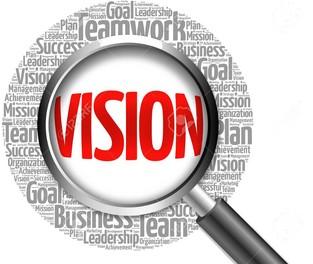
A world where every myeloma patient can live life to the fullest, unburdened by the disease.

Improving the quality of life of myeloma patients while working toward prevention and a cure!



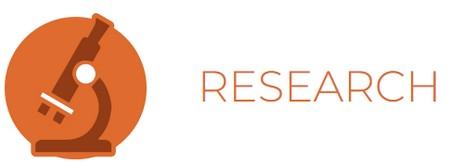

Raise the Bar
Examine the why of all our actions to ensure they are purpose-driven, meaningful, and effective.

Guiding Principles
Broaden our Reach
Address unmet patient needs by expanding our reach to diverse & underserved populations in everything we do.

Innovate Every Step of The Way
Provide those who need it most with what they need the most, throughout their myeloma journeys.


Our Four Pillars
What is IMF’s Superpower
Collaborative Creative Comprehensive



IMWG – International Myeloma Working Group
320 KOLs from 41 countries with 62 published guidelines



IMF’S CONTRIBUTION & INFLUENCE ON MYELOMA RESEARCH
IMWG Guidelines & Research | Global Researcher Pipeline | Global Clinical Trials | BSRI – from MRD to CURE

Bone Disease & Imaging Guideline

• Bone Diseases Treatment Recommendation
• Vertebroplasty and Kyphoplasty Guidelines
• Pet/CT | MRI | WBLDCT

• MRD Definition
• Flow Cytometry | MASSSPEC | LIQUID BIOPSY 10-8 Sensitivity
• Tissue Bank MRD (A BSRI Project)
• MRD Surrogate End Point to OS and Clinical Trials i2 Team

An IMWG Project
• Immunotherapy Database

Other
• Plasma Cell Leukemia
• Infection Management


2024 U.S. Advocacy Priorities Snapshot
1. ENSURE ACCESS TO CARE
INSURANC E REFORM: DRUG ACCESS
2. ELIMINATE FINANCIAL BARRIERS
3. SECURE RESEARCH FUNDING Step Therapy Protocols Safe Step Act
H.R. 2630 / S. 652
INSURANC E REFORM: DRUG ACCESS PBM Reform PBM Reform Act
H.R. 5378 / S. 1339
MEDICARE REFORM:
PHYSICIAN ACCESS
Tele-Health/Medicine
Telehealth Modern. Act
H.R. 7623 / S. 2016
INSURANC E REFORM: COPAYS Copay Accumulators HELP Copays Act H.R. 830 / S. 1375 Oral Parity Cancer Drug Parity Act H.R. 6301 / S. 2039
FEDERAL FUNDING
ANNUAL APPROPS Inflation Reduction Act implementation Cap & Smoothing (MPPP), Drug Pricing
CLINICAL TRIAL DIVERSITY
Annual Appropriations
NIH: National Cancer Institute, National Institute on Minority Health, ARPA-H
CDC: Comprehensive Cancer Control Initiative
DoD: Congressionally Directed Medical Research Program (CDMRP) for Myeloma.
Focus on underserved, POC, rural settings and socioeconomically disadvantaged groups


Is it Enough?

The IMF has made incredible strides in empowering patients. Imagine a newly diagnosed patient, overwhelmed and scared.
• Clear, concise information and Education
• Support groups
• We advocate on your behalf.
• We do and conduct research. These are vital steps, but…
The answer is a resounding Yes, but we need to do MORE!









More Should Be Done, and Here’s How the IMF Plays a
Role

• We envision a future where patients can thrive, not just survive.
• Myeloma shouldn't dictate your quality of life.
• You shouldn't have to choose between effective treatment and debilitating side effects.
• C U R E


Strategic Priorities
1. Initiate and run a concierge service for myeloma patients (and community oncologists)
• Reduce Time to Hope
• Personalized and customized warm blanket
• Lifelong partnership
2. Meaningfully collect the patient's voice to generate Real-World Evidence and inform research, policy, and care.
• IMF has unprecedented access to the patient and patient voice. We aim to reach 90% of the patients in 90 days, including ways to reach patients at scale at diagnosis.
• Collect the patient's voice meaningfully to generate Real World Evidence and inform research and policy.
3. The question is the answer
• What are the unmet research needs we can ask and accelerate through
• Large-scale funding of the top 1-3 research questions
• Formation of a US Myeloma Clinical Trial Network


Members of IMF’s SAB
• Wee Joo Chng, MD (National University Cancer Institute, Singapore and National University of SingaporeSingapore);
• Vania Hungria, MD, PhD (Santa Casa de São Paulo— São Paulo Brazil);
• Sigurður Yngvi Kristinsson, MD, PhD (University of Iceland— Reykjavík, Iceland)
• Shaji Kumar, MD (Mayo Clinic—Rochester, MN, USA)
• Sagar Lonial, MD, FACP (Winship Cancer Institute, Emory University—Atlanta, GA, USA
• Thomas G. Martin, MD (UCSF, CA — Helen Diller Family Comprehensive Cancer Center—San Francisco, CA, USA);
• María-Victoria Mateos, MD, PhD (University of Salamanca—Salamanca, Spain);
• Joseph Mikhael, MD (TGen, City of Hope Cancer Center—Phoenix, AZ, USA);
• Philippe Moreau, MD (University Hospital of Nantes—Nantes, France);
• Nikhil Munshi, MD (Dana-Farber Cancer Institute—Boston, MA, USA);
• Jesús San Miguel, MD, PhD (University of Navarra—Pamplona, Spain);
• Saad Z. Usmani, MD, MBA, FACP, FASCO (Memorial Sloan Kettering Cancer Center—New York, NY, USA);
• Yelak Biru, MSc (International Myeloma Foundation, Los Angeles, CA, USA)
• S. Vincent Rajkumar, MD (Mayo Clinic—Rochester, MN, USA)


We know that patients with cancer and the HCPs that treat them face a challenging journey leading up to and through treatment

Strain on HCPs and patients1
• US Oncologists report seeing 75 patients per week
• 25%+ US cancer patients report travelling 60+ minutes to their nearest primary care provider

Increasing technology proficiency1
• 50%+ of US oncologists trust AI, especially for use with administrative tasks and patient education
• Cancer patients in US, JP, CN are more likely to be super users of connected health technologies compared to the general population

Balancing technology and humanity
• Critical evaluation of what problems tech solves for is crucial for patients and providers to prevent digital toxicity


Think Big Vision

Recommedation






• Learning prescription (Options, Side Effects, wellness)
• Survey Manager Patient
• Clinical Trial, Expert & Center of Excellence, Support Groups Finder
• Myeloma Manager
• SDM Model
• Financial Resource Aggregator
• My Scheduler
• Patient 360
Feasibility - How implementable is this?


• 2nd Expert Opinion
• Treatment Reminder Community Physician
• Next Best Treatment Option
• SDM Model for Community Docs
• Hyper-individualization
• Nudge and Recommendation
• Enhanced Discovery
• Decision Consulting
• Patient Journey
• Real World Evidence Infoline






ZS and IMF partnered to create an AI-powered chatbot, Myelo, to address needs of myeloma patients, the IMF & HCPs
Chatbot customer personas



IMF team members Healthcare professionals Myeloma patients
Need access to specific, understandable, accurate information among vast content on the website
Need an efficient means to handle the large volume of global queries from patients and HCPs
Need direct and understandable resource to refer patients to, and answer their own questions






Myelo in action

Color me impressed. Excellent responses.
-Myeloma patient
I had a chance to ask the [Myelo] a bunch of questions….even when I asked it “How long will I live?" or "Are there ways to get Revlimid for free?" which are tough questions.– US Onc
I asked several questions and was blown away with the detail of the answers in Spanish. There was not one question in the session that I got an incorrect answer. AMAZING!– US MD + Patient



First time ever non-founder President and CEO
New set of Board of Directors
Collaborative research through the Scientific Advisory Board


Live with, not for myeloma!

For Myeloma Patients


Avoiding to Die
There is no finish line. No bell to ring Living with myeloma!

While avoiding dying, don’t forget to live!


Keynote Lecture: Myeloma: Current & Future Directions


Progress in the Treatment of Myeloma: Current & Future Directions
S. Vincent Rajkumar Professor of Medicine, Mayo Clinic
@VincentRK

Scottsdale, Arizona

Rochester, Minnesota

Jacksonville, Florida


Speaker Name
No conflicts to disclose
Prognosis in Myeloma
PFS
>80% at 4 years (Transplant Eligible)
>70% at 4 years (Transplant Ineligible)
OS
>90% at 4 years (Transplant Eligible)
>75% at 4 years (Transplant Ineligible)
Canadian Myeloma Research Group (CMRG) Database: Real World Data*
Induction-Transplant-Len maintenance
*No consolidation groups only 2007-2021; 72% VCd; 2%
Cote J, ASH 2022

PROGNOSIS IN MYELOMA

mSMART 3.0: Risk Stratification of Active MM
High-Risk Myeloma
FISH
del 17p p53 mutation
t(4;14)
t(14;16)
t(14;20)
1q gain
• Double-Hit Myeloma = Any 2 high risk abnormalities
• Triple-Hit Myeloma = 3 or more high risk abnormalities
Standard-Risk Myeloma
All others including: Trisomies t(11;14)
t(6;14)

INITIAL THERAPY

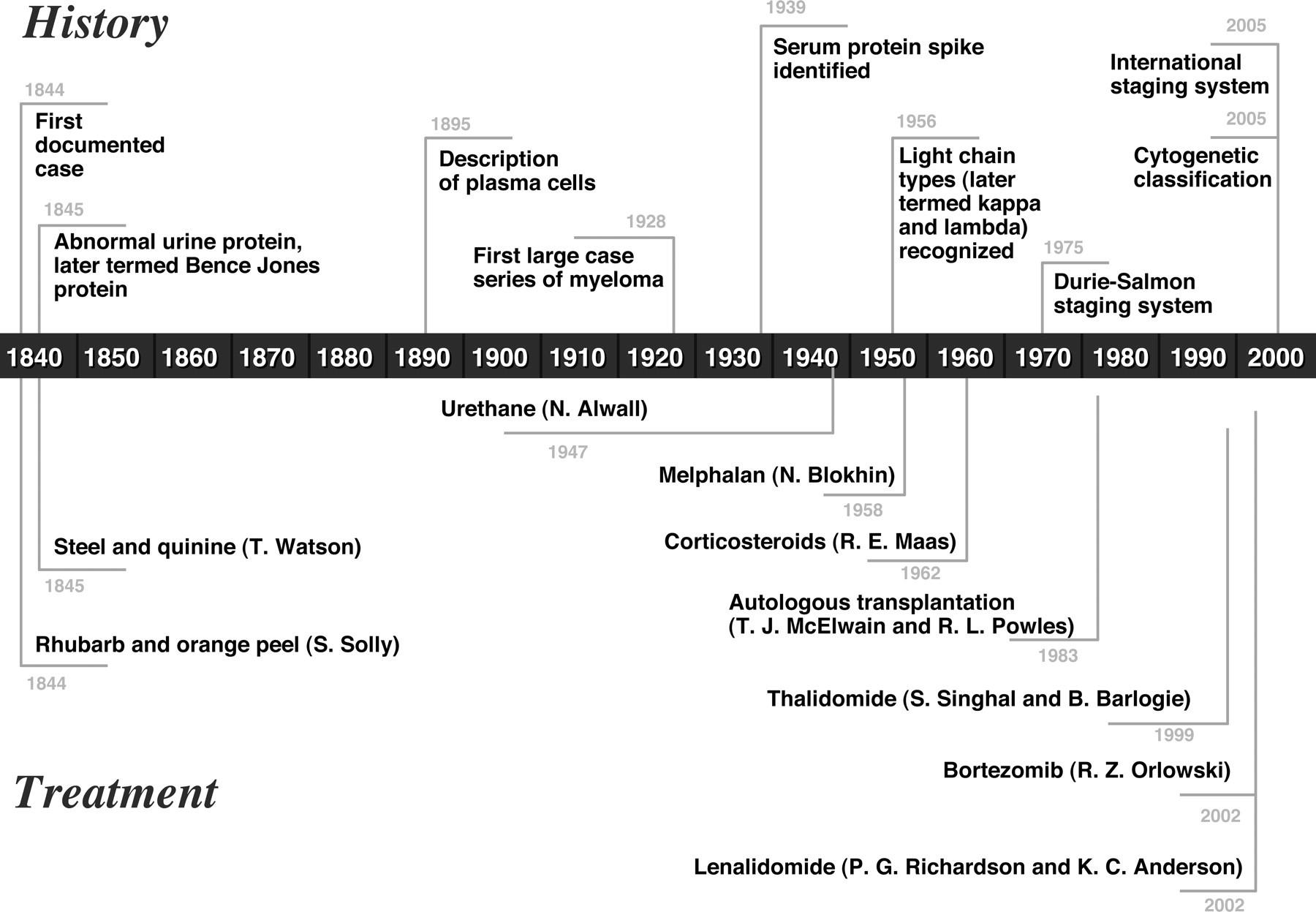
R. A, Rajkumar SV. Blood 2008;111:2962-2972
Copyright ©2008 American Society of Hematology. Copyright restrictions may apply.
Kyle,

Triplets
• VRd • DRd
Can we improve on them?
• Changing the triplet
• Adding an extra drug

Changing the triplet
KRd (using carfilzomib instead of bortezomib)
IRd (using ixazomib instead of bortezomib)

Adding an extra drug (quadruplet)
Adding a monoclonal antibody to CD38 (daratumumab or isatuximab to VRd
• Dara-VRd
• Isa-VRd

PERSEUS: Study Design
Maintenance
Key eligibility criteria:
• Transplanteligible NDMM
• Age 18-70 years • ECOG PS ≤2
Discontinue DARA therapy only

PERSEUS: Progression-free Survival
58% reduction in the risk of progression or death in patients receiving

ROLE OF TRANSPLANT

Early versus Delayed Transplant
2 recent trials: IFM and Determination
PFS is longer, but overall survival is identical.

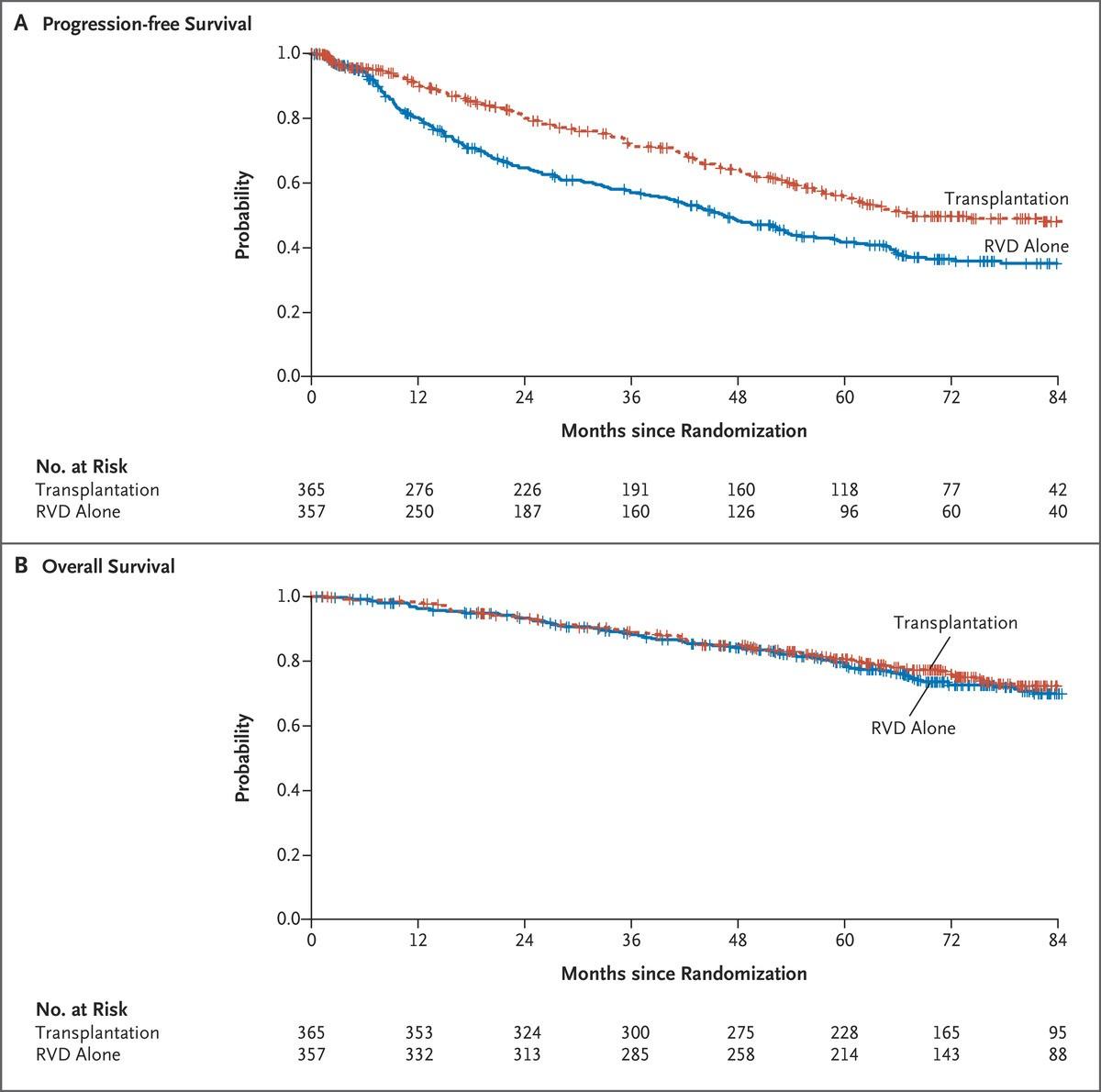
Determination
Trial: Overall Survival


MAINTENANCE

Maintenance Therapy prolongs life and is needed
Risk-adapted maintenance
• Lenalidomide (standard risk)
• Lenalidomide plus bortezomib (high risk)
Alternatives
• Role of daratumumab

Newly Diagnosed Myeloma
High Risk Standard Risk
Quadruplet (Triplet if frail)
Transplant if eligible and willing
Quadruplet
Transplant if eligible
Lenalidomide maintenance
Bortezomib-plus Lenalidomide maintenance
Rajkumar

Initial Therapy: Special Settings
VDT-PACE
Acute renal failure DVD or Dara-VCD Plasma Cell Leukemia
Rajkumar

RELAPSED MYELOMA

Active Drugs in Multiple Myeloma
Alkylators
Steroids
Anthracyclines
Anti-SLAMF7 moAb
Anti-BCMA CAR-T
IMiDs Thalidomide Lenalidomide Pomalidomide
Proteasome
Inhibitors
Bortezomib Carfilzomib
Ixazomib
Selinexor (XPO1 inhibitor) Venetoclax (BCL-2 inhibitor)
Cilta-cel
Ide-cel
JCARH125
Anti-BCMA bispecifics
Anti-CD38 moAbs
Daratumumab
Isatuximab
Felzartamab (MOR202)
TAK 079
SAR 442085 moAB: monoclonal
Elotuzumab Anti-BCMA antibody drug conjugate
Belantamab CELMoDs
Iberdomide
Mezigdomide
Teclistamab
REGN-5458
Alnuctamab Elranatamab TNB 383B AMG 701
Novel bispecifics
Talquetamab (GPRC5D/CD3)
Cevostamab (FcRH5/CD3)
Bortezomib
Carfilzomib
Ixazomib

Ide cel, cilta cel (CART)
Belantamab (ADC)
Teclistamab (Bispecific)






Proteasome
Thalidomide
Lenalidomide
Pomalidomide
BCMA

Selection of Regimen
• Timing of the relapse
• Response to prior therapy
• Aggressiveness of the relapse
• Performance status

Non-Medical Factors
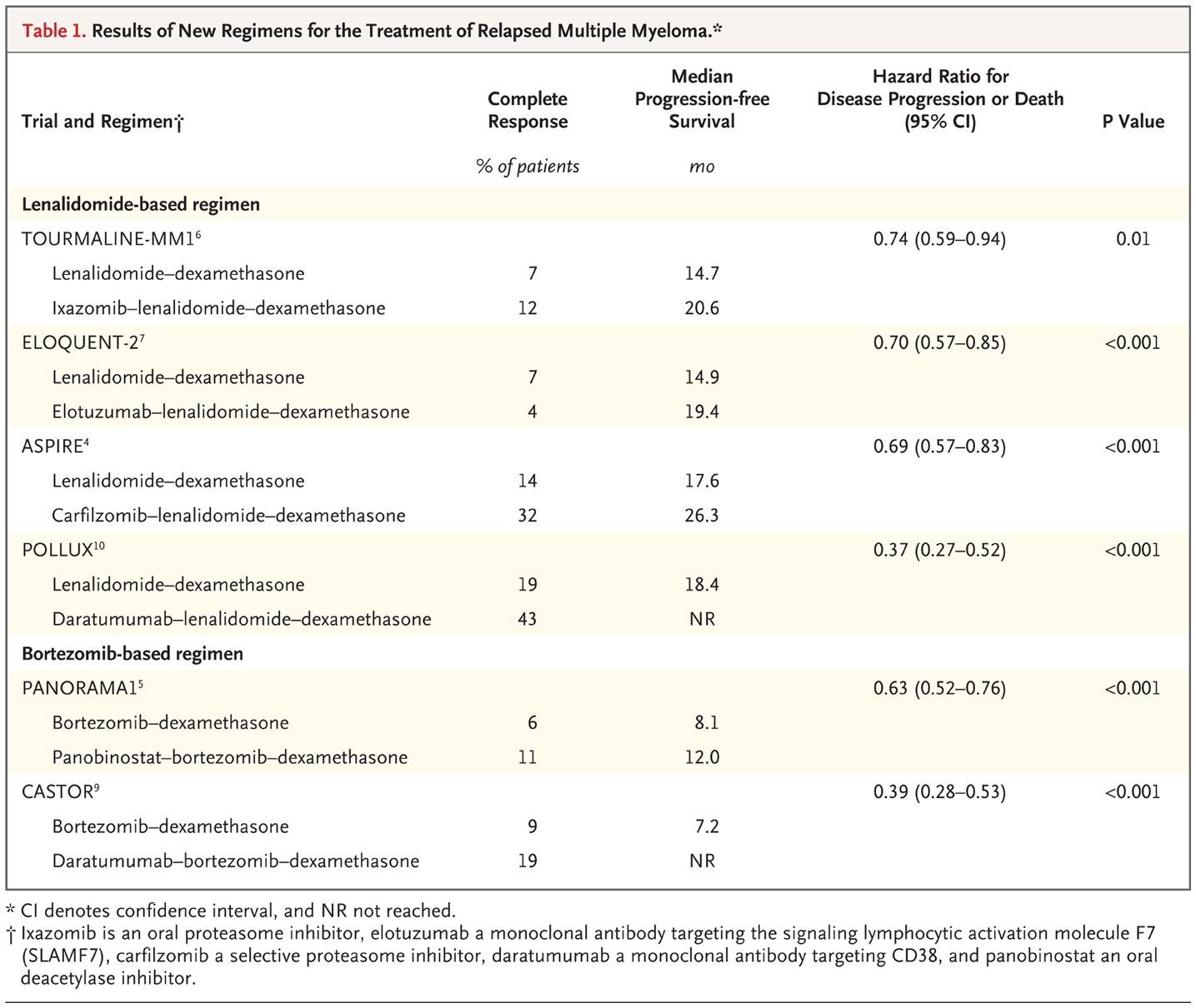

Principles
• Prefer triplets
• At least two new drugs
• Consider transplant in eligible patients
• Clinical Trials

Amazing Success in Immunotherapy for MM

Munshi COMy
Teclistamab
Talquetamab
Elranatamab
2023

Chimeric Antigen Receptor T Cells
• CAR-T cells are genetically-modified to express CARs


CART Cell Therapy
Ide-Cel
Cilta-Cel

Bispecific
Antibodies in Relapsed Refractory Myeloma


Thalidomide
2-(2,6-dioxopiperidin-3-yl)isoindole-1,3-dione


Mezigdomide (CC-92480)
4-[4-[[4-[[2-[(3S)-2,6-dioxopiperidin-3-yl]-1-oxo-3H-isoindol-4-yl]oxymethyl]phenyl]methyl]piperazin-1-yl]-3-fluorobenzonitrile


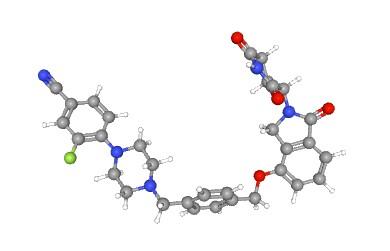

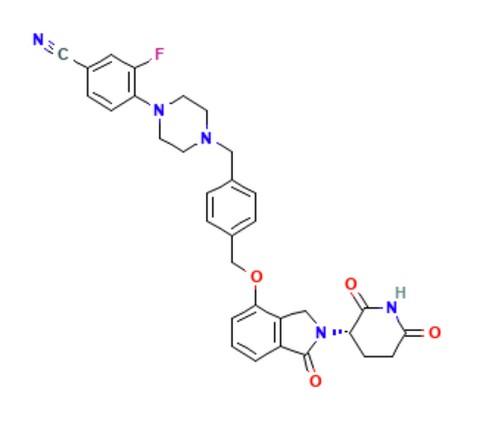


• Bone strengthening
• Antibiotics
• Blood thinners
• Antacids
• Pain meds
• Kyphoplasty or Vertebroplasty
• Radiation Supportive Care

The FUTURE

Disease Definition

Previous Disease Definitions
• <10% BMPC AND
• <3gm/dL M protein
• ≥10% BMPC OR
• ≥3 gm/dL M protein
CRAB= Hypercalcemia, renal failure, anemia, or lytic bone lesions attributable to a clonal plasma cell disorder
26th Edition, 2019
Rajkumar SV. Cecil Textbook of Medicine,

Revised IMWG Criteria
• <10% BMPC AND
• <3 gm/dL M protein AND
• No MDE
• ≥10%-60% BMPC OR
• ≥3 gm/dL S. M protein OR
• ≥500 mg/24h Ur. M protein AND
• No MDE
MDE, myeloma-defining events
Rajkumar SV, Dimopoulos M, Palumbo A, et al. Lancet Oncol. 2014;15(12):e538-e548.
• PCPD, AND
• 1 or more MDE
o CRAB
o ≥60% BMPC
o ≥100 FLC ratio
o >1 MRI focal lesion
Speaker Name
Early Intervention

Smoldering Multiple Myeloma
High-Risk SMM

80% risk of progression in 2 years
• >60% BMPC
• FLCr >100
• >1 MRI focal lesions
Low-risk SMM:
IMWG 2019 Risk Stratification of SMM
Lenalidomide
Lenalidomide plus dexamethasone
Treatment of High Risk SMM

Potential New Myeloma or Smoldering Myeloma
Any Myeloma Defining Events?
CRAB,
>60% PC,
FLC >100,
MRI >1 focal
No Myeloma Defining Events (SMM)
Treat as Myeloma
Risk SMM or Evolving SMM
High Risk SMM (Median TTP ~2 years) Intermediate or Low Risk SMM Early Therapy with Len or Rd x 2 years
Observation
Speaker Name
Screening
The iStopMM study

80,759 participants Rögnvaldsson S et al. Blood Cancer Journal 2021
3,725 with MGUS







Prevalence of MGUS
Racial Disparity: NHANES 10-49
Landgren O…. Rajkumar SV. Blood Cancer Journal 2017
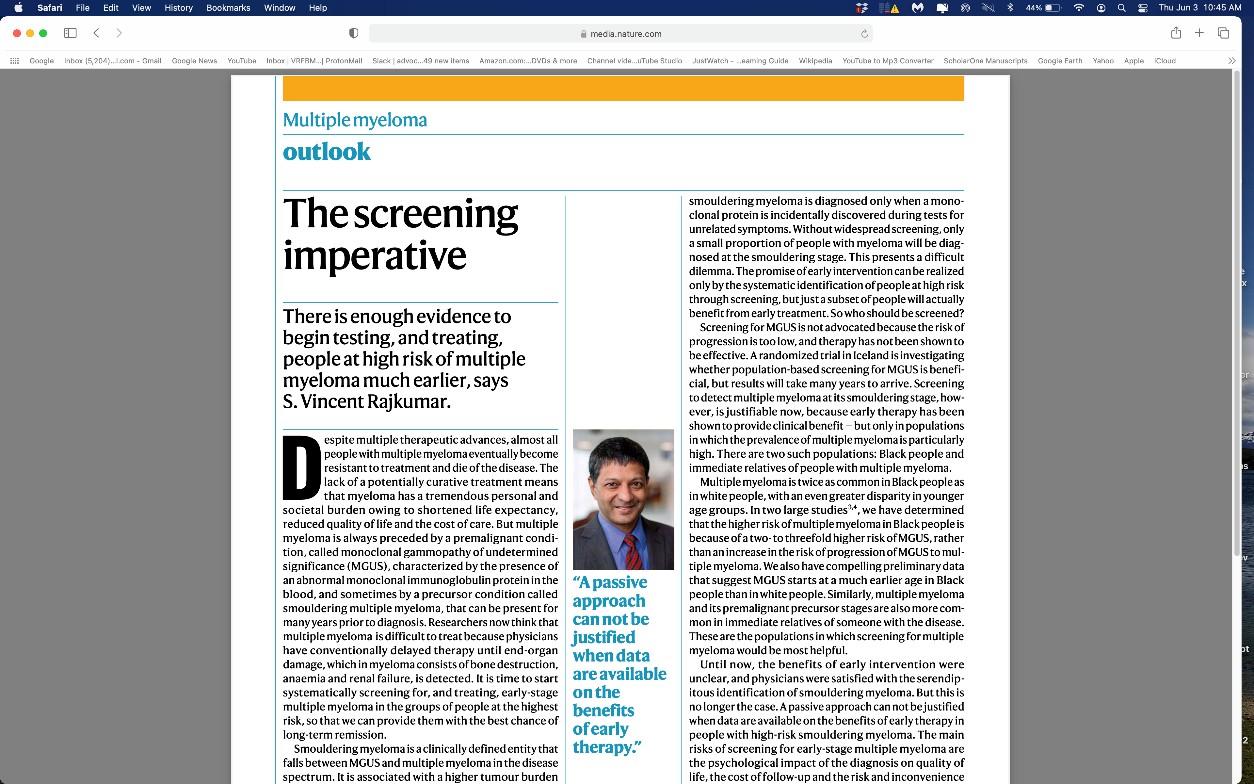
Speaker Name
The Multiple Myelomas
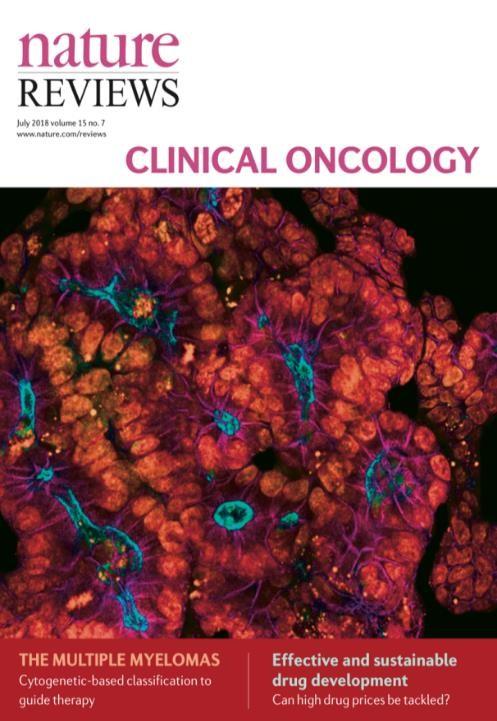
• t(11;14) Myeloma
• t(4;14) Myeloma
• MAF Myeloma
• t(14;16) (C-MAF)
• t(14;20) (MAF-B)
• Trisomic Myeloma
• Other IgH/IgL translocated Myeloma
• t(6;14) (CCND3)
• Unclassified
Speaker Name Response Adapted Therapy

Proven
• Prognostic marker
• Surrogate end point for drug approval (ODAC 12-0)
Unproven
• Goal of therapy
• Marker of Cure

MRD Methods
Next-Gen Sequencing
Next-Gen Flow
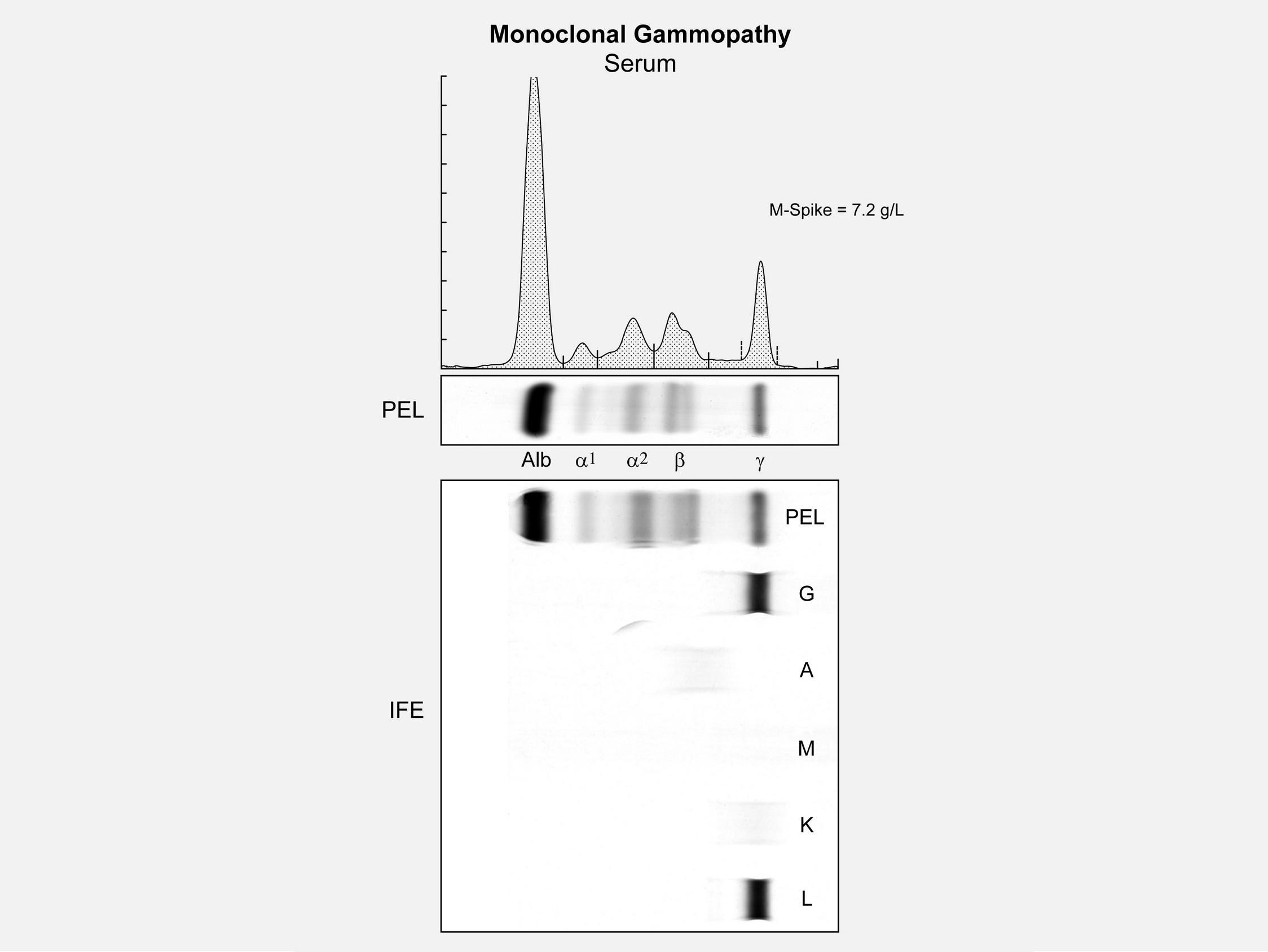
M spike in gamma region

SWOG Maintenance Trial
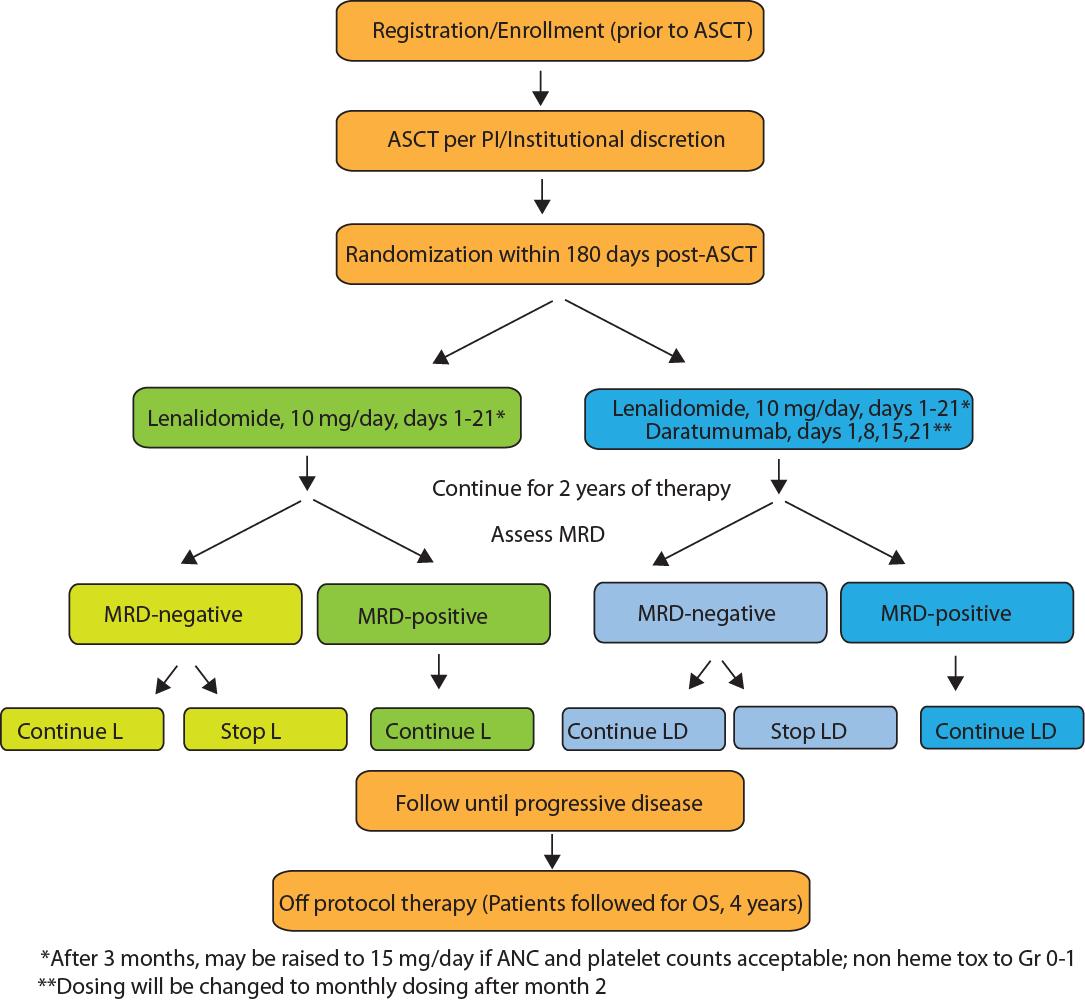
Speaker Name
The Path to Cure

Better
Combinations and Sequencing
Earlier use of Immunotherapy
MRD-directed therapy
Early Intervention at SMM stage
Conceptual/ Regulatory
▪ Len v Obs
▪ Rd vs Obs
▪ Dara vs Obs
Strategic: Delay Progression
Strategic: ? Cure ▪ DRd vs Rd
▪ CESAR
▪ ASCENT
▪ Necessary Trials
▪ Does early therapy mean Rd or myeloma like therapy?
▪ Can we cure myeloma with early aggressive therapy?

Q&A with Teresa and Dr. Joe: Understanding Myeloma Basics


Teresa Miceli, BSN, RN, OCN Mayo Clinic; IMF Nurse Leadership Board, InfoLine Advisor


Joseph Mikhael, MD, MEd, FRCPC, FACP, IMF Chief Medical Officer
Q&A with Teresa and Dr. Joe: HelpingYou AnswerYour SG Members’ Questions
Joseph Mikhael, MD, MEd, FRCPC, FACP
Professor, Applied Cancer Research and Drug Discovery, Translational Genomics Research Institute (TGen), City of Hope Cancer Center
Chief Medical Officer, International Myeloma Foundation
Consultant Hematologist and Director, Myeloma Research, Phase 1 Program, HonorHealth Research Institute
Adjunct Professor, College of Health Solutions, Arizona State University

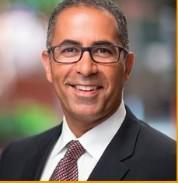
Teresa S. Miceli RN BSN OCN
Mayo Clinic, Rochester, MN
• Mayo Associate
• Assistant Professor of Nursing
• Myeloma Research RN Navigator
International Myeloma Foundation
• InfoLine Advisor
• Nurse Leadership Board
• Support Group Leader
NCI Myeloma Steering Committee


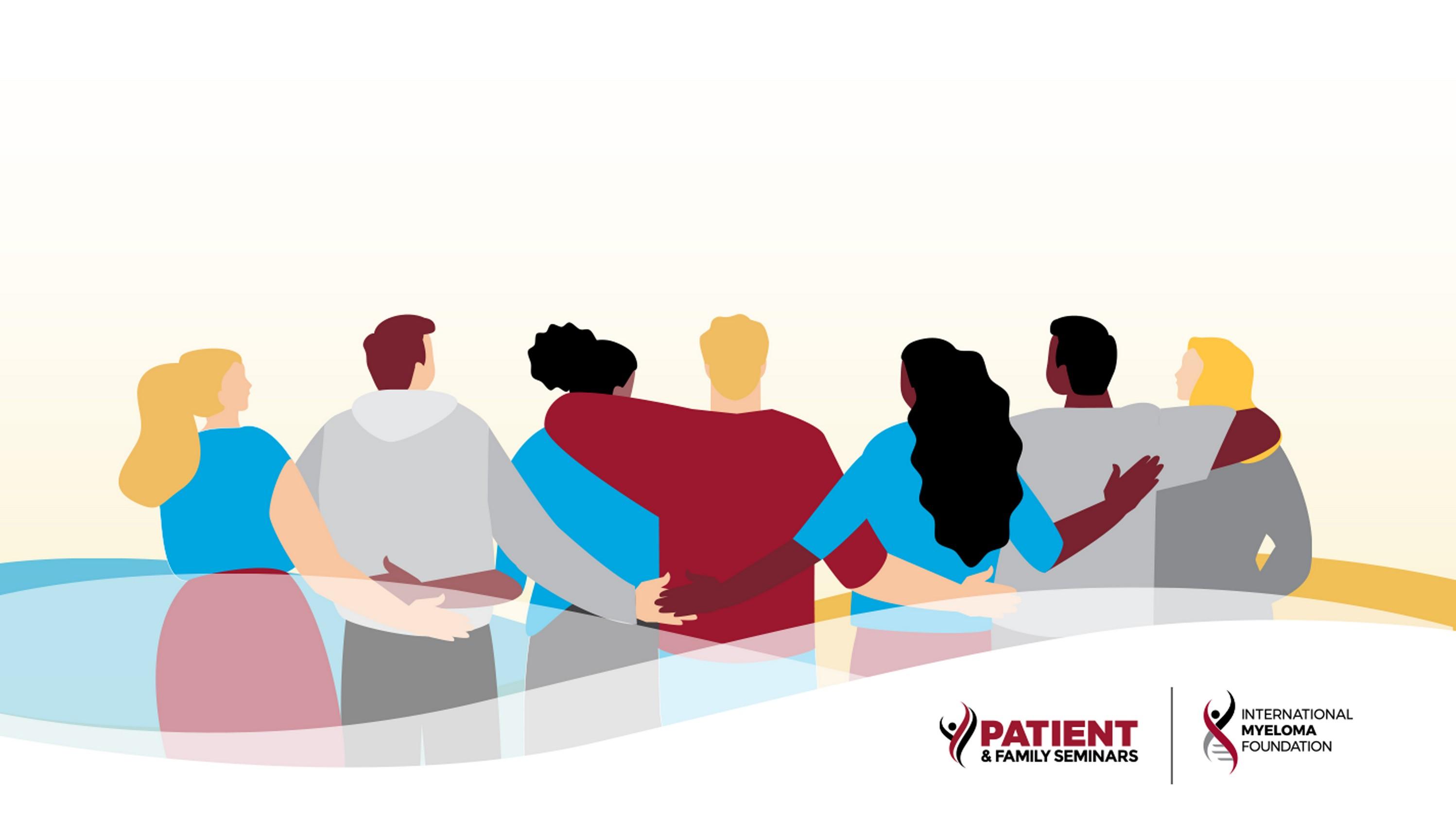



How common is Myeloma?

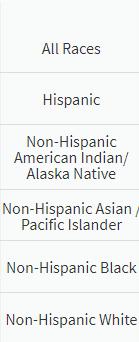

Rate of New Cases per 100,000 Persons by Race/Ethnicity & Sex How common is Myeloma?

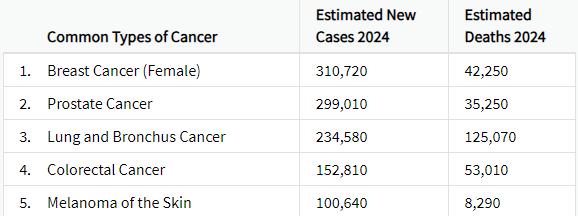

Percent of New Cases by Age

https://seer.cancer.gov/statfacts/html/mulmy.html; dated



What
Causes Myeloma? How/Why Did I Get This?
Biochemical or Symptomatic Progression/Relapse
Environmental Factors:
• Exposure to some chemicals
• Radiation exposure
Examples:
Agent Orange
Burn pits
Pesticides, Herbicides
Firefighter/First Responder exposures
Individual Factors:
• Age
• Family History of related disorders
• Personal History of MGUS or SMM
• Obesity
In most cases, the honest truth
WE DON’T KNOW



(Mono)clonal Plasma Cells



Heavy Chain & Light Chain


Heavy Chain = M-Spike



65% IgG – most common
20% IgA – associated with AL Amyloid
5% to 10% light chain-only (kappa, lambda)


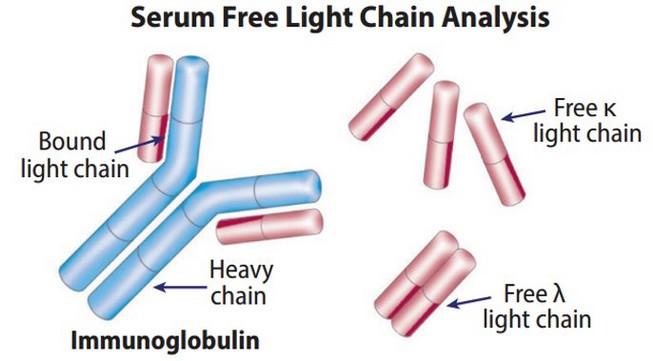





Photo Credit
White Blood cell Platelets
Red Blood Cells
Clonal Plasma cells
Spectrum of Monoclonal Protein Disorders
• AL-Amyloid
• POEMS
• Light or Heavy Chain Deposition Disease
• MGRS = Renal
• MGNS = Neuro

Condition MGUS1-4 (Monoclonal Gammopathy of Undetermined Significance)
1-5,8 (Smoldering Multiple Myeloma)
Presence of Myeloma Defining Events
Likelihood of progression
1. Kyle RA, et al. N Engl J Med. 2007;356:2582-90.
2. IMWG. Br J Haematol. 2003;121:749-57.
3. Jagannath S, et al. Clin Lymphoma Myeloma Leuk. 2010;10(1):28-43.
4. Kyle RA, et al. Curr Hematol Malig Rep. 2010;5(2):62-69.
5. Mateos M-V, et al. Blood. 2009;114:Abstract 614.
6. Durie BG, Salmon SE. Cancer. 1975;36:842-854.
7. Durie BG, et al. Leukemia. 2006;20(9):1467-1473.
8. Rajkumar SV, et al. Lancet Oncology 2014; 15:e538e548.
* In clinical trial
105



Multiple Myeloma and Myeloma Defining Events





Testing For Myeloma: Blood & Urine
Test Name
CBC + differential
Complete metabolic panel
Beta-2 Microglobulin (B2M)
Lactate Dehydrogenase (LDH)
Serum Immunofixation and Protein electrophoresis (SPEP+IFE)
Immunoglobulins (G, A, M, D, E)
Free light chain assay with kappa/lambda ratio
Urine immunofixation & protein electrophoresis (UPEP+IFE)
What it means

Hemoglobin, WBC, Platelets
Creatinine, Calcium, Albumin, Liver function
Part of staging and risk stratification
Measures the level of normal and clonal protein
Identifies the type of clonal protein



Measures the level of normal and clonal protein Identifies the type of clonal protein




This Photo by Unknown Author is licensed under
Testing For Myeloma: Imaging
Imaging:
–Skeletal survey: Series of X-rays; less sensitive than other techniques
–Whole body low dose (CTWB-LD CT )
–Positron Emission Tomography (PET/CT)
–Magnetic Resonance Imaging (MRI)

Healthy bone versus myeloma bone disease



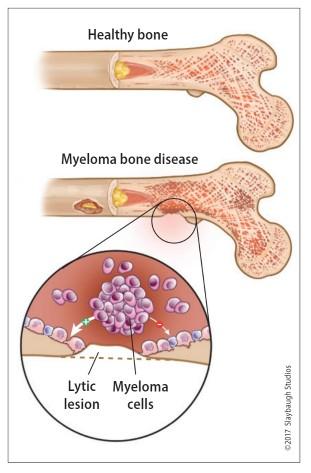




This Photo by Unknown Author is licensed under CC BY-NC-ND
Testing For Myeloma: Bone Marrow
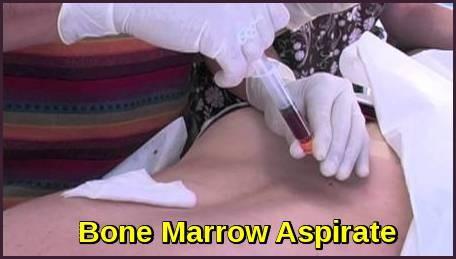

Bone marrow biopsy & aspirate
Bone marrow plasma cells (%)
Congo Red staining if concern for
Bone marrow genetics
Cytogenetics
Fluorescence in situ hybridization (FISH)
Next generation sequencing (NGS)
High Risk FISH Results*



of people with NDMM




This Photo by Unknown Author is licensed under CC BY-SA
Myeloma Treatment Schema
Transplan t Eligible Patients
Transplan t Ineligible Patients Consolidation / Maintenance Continued
Supportive Care







Philippe Moreau. ASH 2015.
Drug Class Overview

(thalidomide)
(lenalidomide)



Drug Class Overview

Peptide Drug Conjugate*
BCMA Targeted Antibody Drug
Conjugate (ADC)*
(Melphalan Flufenamide)
Blenrep (belantamab mafodotinblmf) Bela, Belamaf, or
(idecabtagene vicleucel)
Bispecific Antibodies
Carvykti (ciltacabtagene vicleucel)
Tecvayli (teclistimab)
Talvey (Talquetamab)
Elrexfio (Elranatamab)
Cevostamab, Iberdomide, Mezigdomide, Venetoclax Linvoseltamab, LCAR-B38M, ABBV-383



Targets on the Myeloma Cell Surface and Therapeutic Antibodies

Bi-Specific Antibodies
Talquetamab






Antibody Drug
Elotuzumab
Bi-Specific Antibodies



Bi-Specific Antibodies
Antibody Drug
Daratumumab and Darzalex Faspro
Isatuximab TAK-079


Immune Therapies
Ide-cel CAR-T
Cilta-cel CAR-T
Teclistamab
Other CAR-Ts
Other Bi-Specific Antibodies



The Evolution of Myeloma Therapy
VD
Rev/Dex
CyBorD
VTD
VRD
KRD
D-VMP
DRD
Tandem ASCT (?)
Nothing
Thalidomide?
Bortezomib
Ixazomib
Lenalidomide
Combinations
D-VRD
Isa-VRD
D-KRD
Isa-VRD “More” induction?
Daratumumab?
Carfilzomib?
Lenalidomide + PI
ASCT, autologous stem cell transplant; CAR, chimeric antigen receptor; Cy, cyclophosphamide; d- daratumumab; D/dex, dexamethasone; isa, isatuximab; K, carfilzomib; M, melphalan; PDL1, programmed death ligand-1; PI, proteasome inhibitor; Rev, lenalidomide; V, bortezomib.
Speaker’s own opinions.
Bortezomib
Lenalidomide
Carfilzomib
Pomalidomide
Selinexor
Panobinostat
Daratumumab
Ixazomib
Elotuzumab
Isatuximab
Belantamab mafodotin*
Melphalan flufenamide*
Idecabtagene autoleucel
Ciltacabtagene autoleucel
Teclistamab, Talquetamab
Elranatamab
CAR T Cell Therapy
Bispecific/Tri-specific
Antibodies
Cell Modifying Agents
Venetoclax
PD/PDL-1 Inhibition?
Small Molecules
* These agents are currently off the market but available through special programs



Measuring Disease Response: IMWG Response Criteria

























Negative by next generation flow (NGF) (minimum sensitivity 1 in 10-5 nucleated cells or higher)*
mCR AND normal Free Light Chain ratio, Bone Marrow negative by flow, 2 measures
CR AND negative PCR
Complete Response: Negative immunofixation (IFE); no more than 5% plasma cells in BM; 2 measures
Very Good Partial Response: 90% reduction in myeloma protein
Partial Response: at least 50% reduction in myeloma protein
Minimal Response
Progressive Disease: At least 25% increase in identified myeloma protein from lowest level Stable Disease: Not meeting above criteria
MRD = Minimal Residual Disease
sCR = Stringent Complete Response; BM = Bone Marrow


Kumar, S., Paiva, B., Anderson, K. C., Durie, B., Landgren, O., Moreau, P., ... & Dimopoulos, M. (2016). International Myeloma Working Group consensus criteria for response and minimal residual disease assessment in multiple myeloma. The lancet oncology, 17(8), e328-e346.

When Do I Need A New Treatment?
Biochemical or Symptomatic Progression/Relapse
Not every relapse requires immediate therapy
Each case is different
Symptomatic or extramedullary disease
Asymptomatic high-risk disease or rapid doubling time or extensive marrow involvement
Initiate Treatment
Asymptomatic biochemical relapse on 2 consecutive assessments
Consider Observation Monitor Carefully
Consider Treatment
Patient-/Disease-Specific Monitor Carefully
Things to consider when selecting the next treatment:
• What has already been used?
• Why was it stopped?
• How long ago was it received?
• Were there side effects?





What about Disease Control and Cure in Myeloma?
Biochemical or Symptomatic Progression/Relapse


Control is the immediate priority with active disease
Cure remains the overall goal
Defining “Cure” has many considerations: Minimal Residual Disease Negative (MRD-)
Time Off Therapy Functional Cure
Unmeasurable Disease, Receiving No Treatment Active Disease Requiring Treatment Stable or Unmeasurable Disease, Receiving Treatment








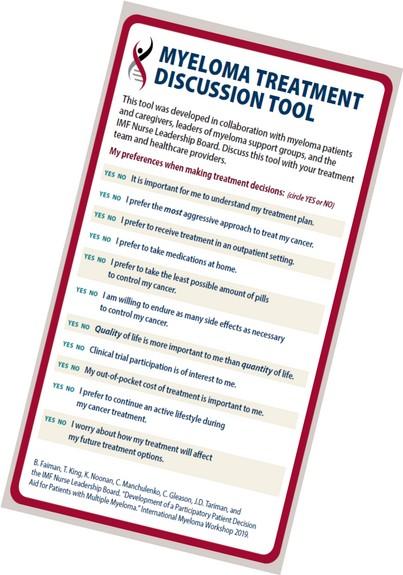
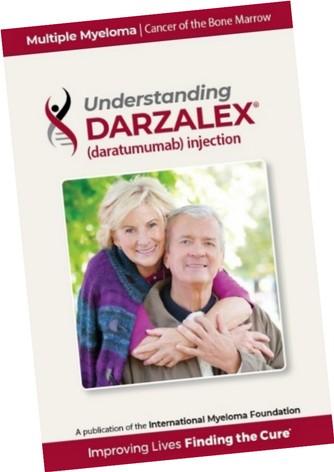

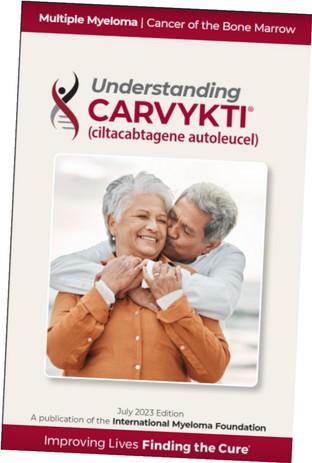



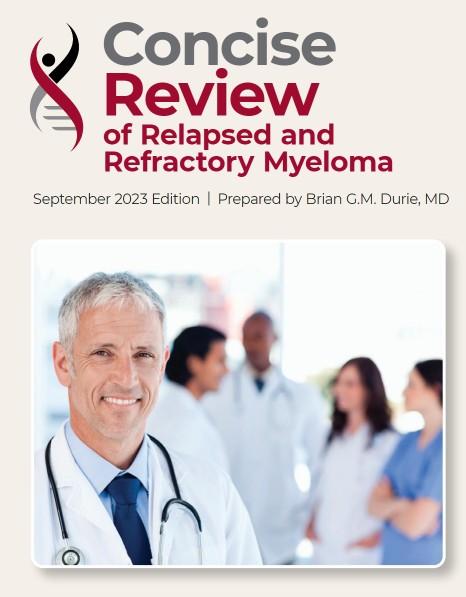







Stretch & Morning Break
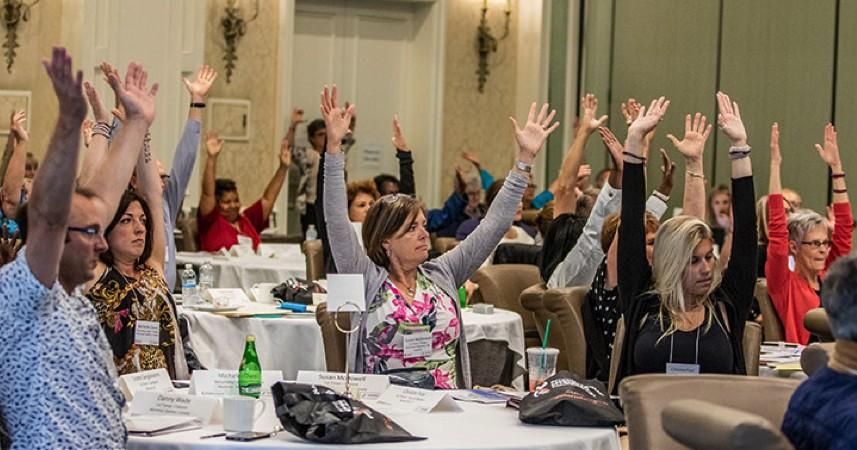



Advocacy at the IMF


Hatcher IMF Global VP, Patient Engagement & Advocacy
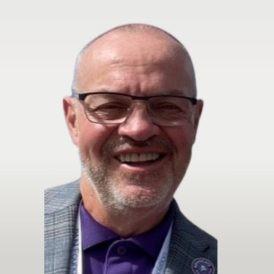

Riotto Patient Advocate and Support Group Leader
Emma
Michael
2024 Support Group Leaders Summit
Advocacy at the IMF
Informing and influencing policymaking on the critical healthcare issues that directly impact myeloma patients.

Principles Priorities Grassroots





International Myeloma Foundation
Our Vision
A world where every myeloma patient can live life to the fullest, unburdened by the disease.



Our
Mission
Improving the quality of life of myeloma patients while working towards prevention and a cure.


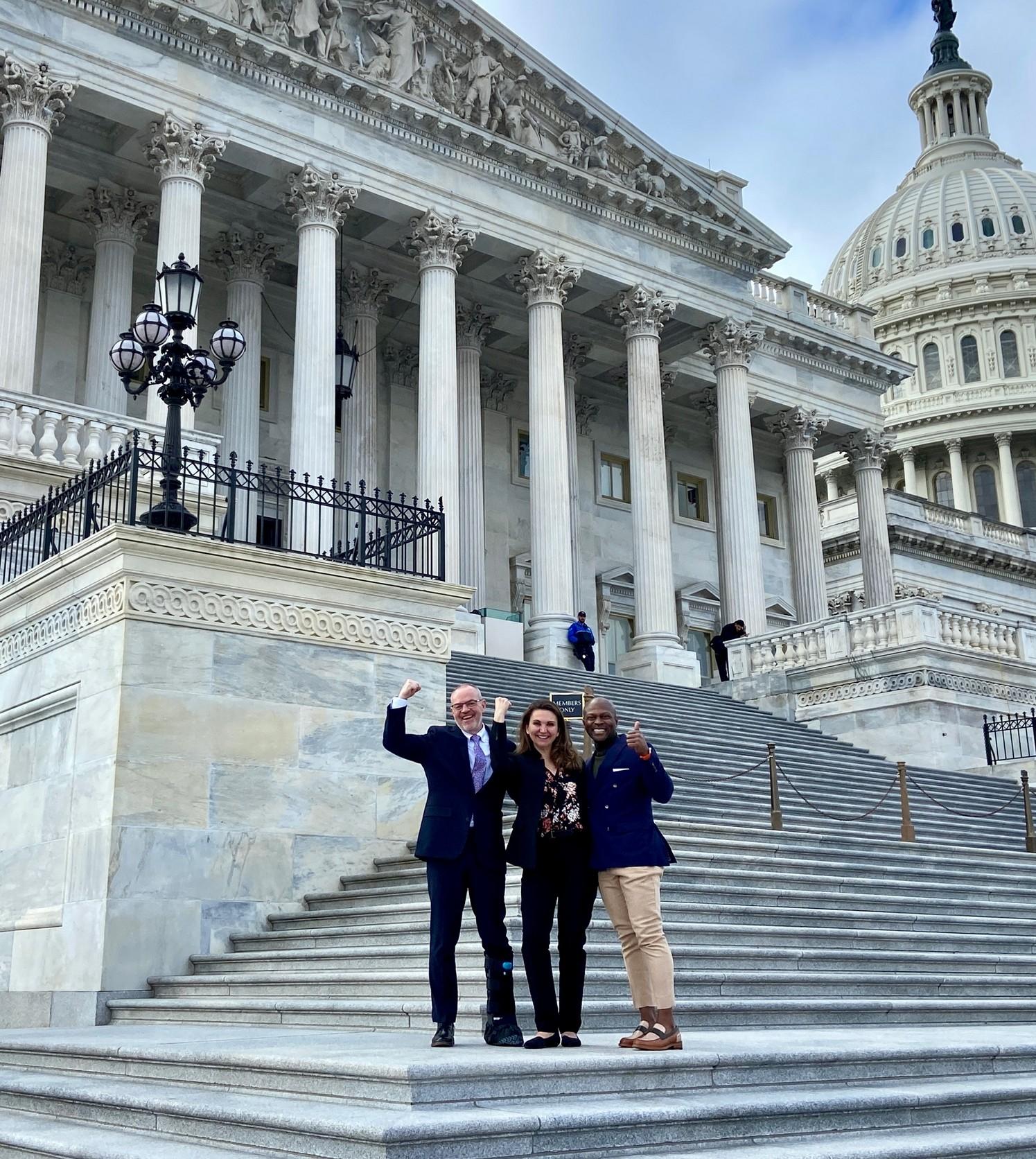
Advocacy at the IMF

The IMF is the voice of the myeloma community in Washington, DC.
Our objective is to inform and influence the critical healthcare policy decisions impacting the myeloma community.
We believe in the value of working to improve healthcare laws
to ensure there are no barriers to care as patients navigate their myeloma journey.

The U.S. Advocacy Team



U.S. Grassroots Advocacy
U.S. Policy & Advocacy


Global Advocacy
Michael Riotto
Emma Hatcher
Danielle Doheny
What is Advocacy?
Taking action to help people say what they want, secure their rights, represent their interests and obtain the services they need.

Influencing



Advocating & Lobbying


Advocates work in partnership with the people and communities that they support and represent their interests. Representing & Empowering

Collaborating & Mobilizing

Negotiating
What are the Objectives of Advocacy?









What Do We Advocate For?

The following policy principles are the foundation on which we prioritize our advocacy work.
1. Ensure Access to Care: We advocate for policies that ensure all myeloma patients have equitable, comprehensive, patientcentered care without insurance barriers that limit options or delay treatment initiation.
2. Eliminate Financial Barriers: We advocate for policies that allow myeloma patients access to treatments and supportive care interventions without facing financial hardships.
3. Advance Myeloma Research: We advocate for annual appropriations funding for myeloma research and the advancement of clinical trial eligibility and research protocols that ensure representation from diverse populations.

2024 U.S. Advocacy Priorities Snapshot

1. ENSURE ACCESS TO CARE
INSURANC E REFORM: DRUG ACCESS
2. ELIMINATE FINANCIAL BARRIERS
3. ADVANCE MYELOMA RESEARCH Step Therapy Protocols Safe Step Act
H.R. 2630 / S. 652
INSURANC
E REFORM: DRUG ACCESS PBM Reform PBM Reform Act
H.R. 5378 / S. 1339
MEDICARE REFORM: PHYSICIAN ACCESS
Tele-Health/Medicine
Telehealth Modern. Act
H.R. 7623 / S. 2016 INSURANC E REFORM:
Annual Appropriations
MEDICARE REFORM:
COST LIMITS INSURANC E REFORM: COPAYS Copay Accumulators HELP Copays Act H.R. 830 / S. 1375 Oral Parity Cancer Drug Parity Act H.R. 6301 / S. 2039
FEDERAL FUNDING ANNUAL APPROPS Inflation Reduction Act implementation Cap & Smoothing (MPPP), Drug Pricing
NIH: National Cancer Institute, National Institute on Minority Health, ARPA-H
CDC: Comprehensive Cancer Control Initiative
DoD: Congressionally Directed Medical Research Program (CDMRP) for Myeloma.
CLINICAL TRIAL DIVERSITY
Focus on underserved, POC, rural settings and socioeconomically disadvantaged groups
How Did We Come Up With These Priorities?

5. Outcomes
Policy changes to the healthcare system lead to improved outcomes.
Patient
4. Grassroots Advocacy
elevates a patient’s story helping to ensure the success of our activities.

1. Asking & Listening
Patient priorities, challenges, needs are shared with the Advocacy team.
Priorities & Engagemen
t2. Issue Analysis
Patient insights are analyzed and translated into policy priorities.
3. Lobbying
The IMF advocacy staff lobby for legislative and regulatory policy solutions.
How We Advocate

We engage with lawmakers at local, state, and national levels to advocate for laws and policies that benefit patients.
These types of advocacy activities include:




Influence laws that improve access to treatments and ensure fair insurance coverage.
Engage federal regulatory agencies on changes that improve care and treatment availability.
Advocate for increased funding for research, to improve existing therapies and new treatments.
Mobilize patient community members to take part in advocacy activities and campaigns.
Recent Advocacy Events

Congressional “Lobby Day” Focus on Cancer Research Funding
Lobby Congress during annual appropriations process and ask for increased research funding via:
1. NIH (NCI, ARPA-H)
2. CDC: Comprehensive Cancer Control Initiative
3. DOD: Congressionally Directed Medical Research Program (CDMRP)
Congressional Briefing Focused on Oral Parity
Educate Congressional staff about the issue of Oral Parity and request their support to co-sign/advance the Cancer Drug Parity Act.
• One of the most widely attended Congressional Health Briefings of 2024
• Met with staff from key Congressional Committees
• “IMF Lobby Day” March 2025 (Myeloma Action Month)
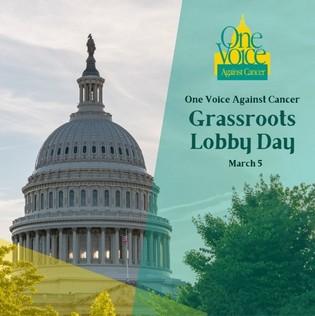




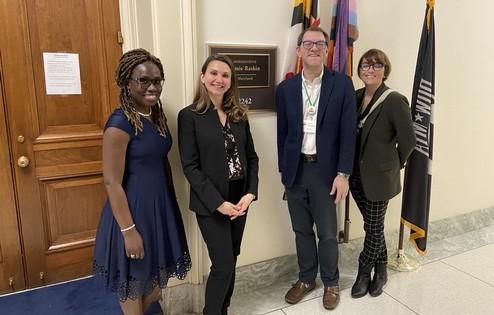
Does Advocacy Work? Yes, but it doesn’t happen overnight.

No Surprises Act
Health care providers/facilities must provide a good faith estimate of expected charges to uninsured or selfpay consumers.

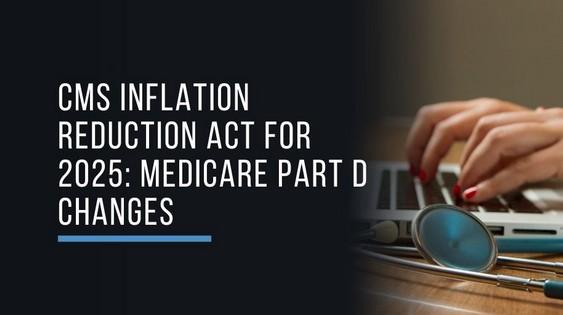

Federal Research Funding Medicare Part D Out-of-Pocket Cap Medicare Rx Payment Plan
Federal funding for research grants awarded by NIH, NCI, ARPA-H are directed annually by House and Senate Appropriations Committees.

$2,000 out of pocket annual limit for brand name prescription drugs covered under Medicare Part D.
Equal monthly payments for Part D out-of-pocket prescription drug costs spread out over the plan year.
Medicare Changes: What’s Coming in 2025



No copays for vaccines under Part D
Insulin copays limited to $35/month

Expanded Eligibility for the Federal Extra Help Program (Low-Income Subsidy Program) to help pay premiums, deductibles, coinsurance, etc.
$3,250 annual cap (approx.) on out-of-pocket spending for prescription drugs under Part D (eliminating 5% coinsurance in catastrophic phase)

$2,000 Annual Cap in out-of-pocket spending for brand name prescriptions under Part D
MPPP: Monthly Payment Plan to “smooth out” total out-of-pocket spending throughout the year, with an overall monthly maximum
• Patients will need to enroll into the program (opt-in)
• The earlier you join the program, the more you can benefit
• Your monthly bill may fluctuate somewhat
• No one will pay more than $2000 for the year
Grassroots Advocacy at the IMF
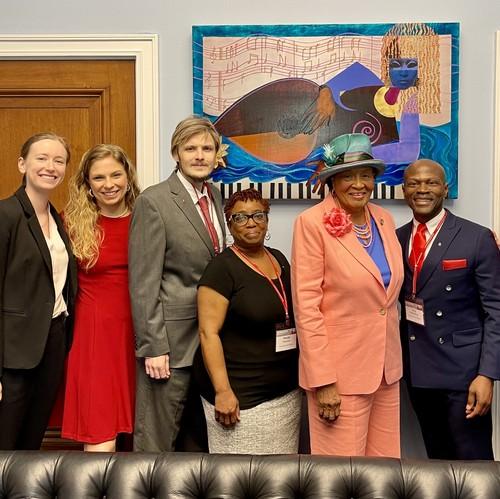



Grassroots Advocacy is the critical component to influencing policy decisions
The IMF brings advocates to Capitol Hill to share their experience with lawmakers.
Together, we champion legislative priorities that directly impact the lives of millions of patients and elevate the voices of of the myeloma community.
The IMF Grassroots Advocacy Program is multi-faceted and growing
• Advocacy Training & Leadership Development
• Policy and Legislative Education
• Grassroots Campaign Planning
• Health Policy Forums & Roundtables
• Advocacy Resource Development
• Storytelling and Personal Narratives
• Sign up for the IMF Advocacy Newsletter
• Sign up for IMF Action Alerts and send a letter or email to a legislator
• Join Quarterly IMF Advocacy in Action Calls and learn about the issues
• Request an Advocacy Update to your support group (on any topic of interest)
• Share this information with your support group (share our slides if you’d like!) Join Us and



Thank You
Navigating the Myeloma Treatment
Landscape: A Deep Dive with Experts
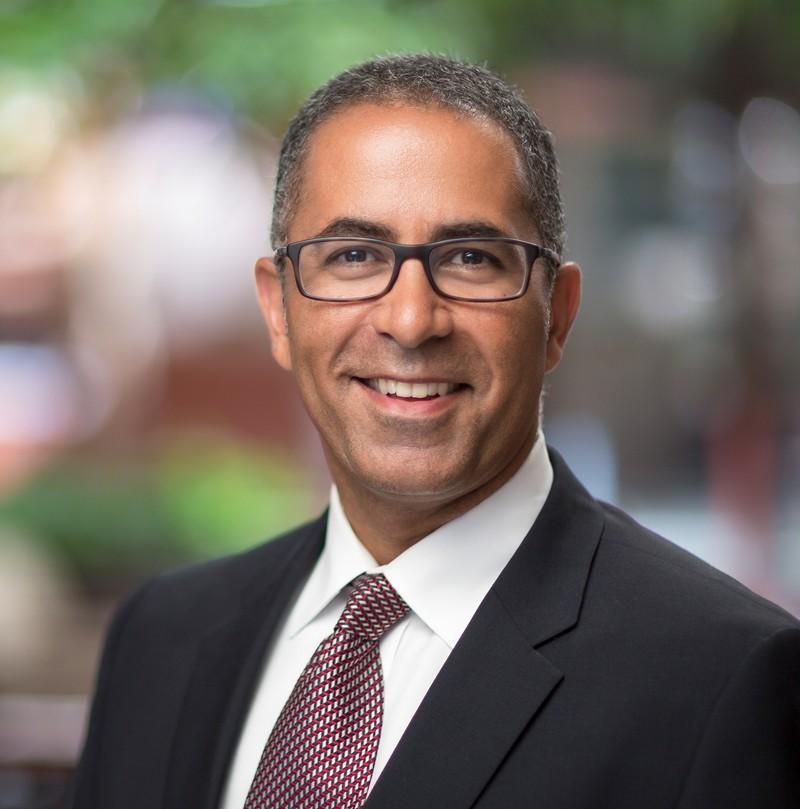
Joseph Mikhael, MEd, FRCPC, FACP,



Newly Diagnosed Transplant Eligible
Standard Risk
Dara-VRd or Isa-VRd x 3-4 cycles
Early ASCT
Lenalidomide maintenance
Cryopreserve stem cells and continue induction x 5-8 cycles
High Risk
Dara-VRd or Isa-VRd x 3-4 cycles
Early ASCT
Lenalidomide maintenance
Bortezomib plus Lenalidomide maintenance
Frail
Newly Diagnosed Transplant Ineligible
Standard Risk
Not Frail
VRd x 8-12 cycles and lenalidomide maintenance, or DRd
Dara-VRd or IsaVRd 8-12 cycles and lenalidomide maintenance
High Risk
Not Frail Frail
VRd x 8-12 cycles and lenalidomide plus bortezomib maintenance
Dara-VRd or IsaVRd 8-12 cycles and lenalidomide plus bortezomib maintenance
Not refractory to CD38 moAB
First Relapse
Dara-refractory or Relapse while on CD38 moAB
DRd Not Refractory to Lenalidomide* Refractory to Lenalidomide*
KRd (preferred)
ERd, IRd (Alternatives)
Not refractory to CD38 moAB
Dara-refractory or Relapse while on CD38 moAB
DKd or Isa-Kd Or
DPd or Isa-Pd
KCd or KPd (preferred)
VCd or EPd (Alternatives)
*Consider salvage ASCT in patients eligible for ASCT who have not had transplant before; Consider 2 nd auto
SCT if eligible and had >36 months response duration with maintenance to first ASCT; Consider cilta-cel if high risk and poor response to quadruplet based initial therapy.
Second and subsequent relapse
First Relapse Options
Additional Options
Consider one of the options listed for first relapse that contains two drugs that the patient is not refractory to
CAR-T or Bispecific antibody Belantamab Selinexor-based regimen; Bendamustine-based regimens; Venetoclax for t(11;14) myeloma; Anthracycline-containing regimen
Rajkumar
Potential New Myeloma or Smoldering Myeloma
Any Myeloma Defining Events?
• CRAB,
• >60% PC,
• FLC >100,
• MRI >1 focal
Treat as Myeloma
No Myeloma Defining Events (SMM)
High Risk SMM (Median TTP ~2 years) Intermediate or Low Risk SMM
Early Therapy with Len or Rd Clinical Trials
Observation
Morning Wrap up and . . .



Robin Tuohy

Share a Memory





Lunch





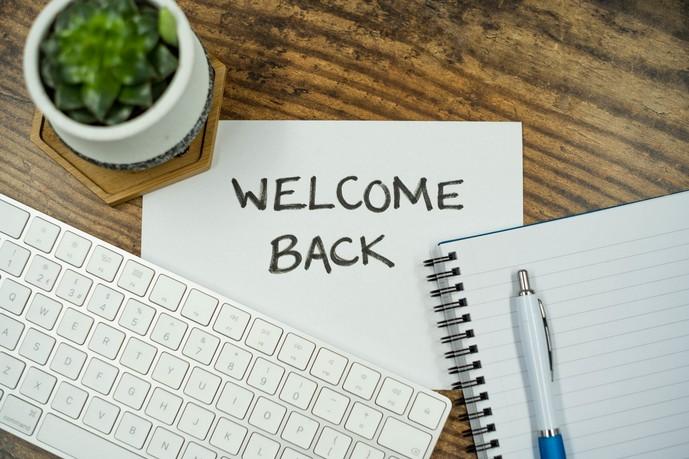


Reminder to obtain your dinner choice chip from the IMF table in
the
foyer during your lunch break.


BMS Presentation
Minh-Anh Nguyen, RN, MSN, FNP-C
Clinical Nurse Consultant, Bristol Myers Squibb

Abbvie Presentation
Kelly Brock, PharmD
Scientific Director, Multiple Myeloma
US Medical Affairs, Oncology, Abbvie
Myelo: An AI-based Game-Changer for Myeloma Patients and Care Partners





IMF Senior Tech Solutions Manager
Yelak Biru Miko Santos
The Rise of the Thinking Machine

AI vs Gen AI


GenAI Chatbot | Welcome Myelo!


Myelo is an AI-powered chatbot serving as the International Myeloma Foundation's virtual assistant for patients, care partners, and healthcare professionals.

GenAI Chatbot | Why create Myelo?
Patient-centric healthcare:
With a growing emphasis on patient education and self-management, Myelo serves as a tool to educate and empower patients.
Optimal outcomes:
The ultimate goal is to achieve the best possible outcomes for patients with multiple myeloma through improved information access and disease management.
Better disease management:
By improving access to information and enhancing patient education, Myelo contributes to better disease management.


Demand for accessible information:
There's a growing need for reliable and easily accessible information sources about multiple myeloma.
Disease understanding:
Myelo helps patients gain a better understanding of multiple myeloma and how to manage living with the disease.
Improved communication:
The tool aims to streamline communication between patients, care partners, and healthcare providers.
Myelo | Highlights

• Strategic partnership: Developed by ZS Associates using their Max.AI platform and leveraging AWS architecture using the latest Large Language Model Claude 3.5 Sonnet
• Specialized focus: Myelo is specifically designed for multiple myeloma, providing deep, specialized knowledge in this area.
• Curated Comprehensive knowledge base: It integrates vast amounts of specialized information from IMF curated sources, including PDFs, video/audio transcripts, and myeloma.org
• Context-aware conversations: The Max.AI platform allows Myelo to maintain context within a chat session, enabling more coherent and personalized interactions.
• Empathetic responses: Myelo is designed to provide empathetic responses based on the context it can change its tone.
• Ethical standards: Myelo adheres to a responsible AI framework, ensuring high ethical standards, and building user confidence.
• Practical features: Users can download chat transcripts, facilitating discussions with healthcare providers and family members.

Capabilities

Information on Myeloma Symptoms, diagnosis, treatments, research
24/7 Availability
Healthcare Team
Question Preparation
Clinical Trials & Research Summaries
Simplified Medical Explanations
General Symptom Management Guidance
Empathic Support
IMF Resources & Services Information
InfoLine Referrals Multi-language Support

Limitations

No real-time or external data access Potential for errors or inconsistencies Cannot provide medical diagnoses/treatments
No ability to perform real-world actions Lacks personal experiences or emotions Cannot retain information between sessions *
Unable to learn from conversations *

Sample Questions

What are the guidelines and recommendations for infection prevention in myeloma patients? What preventive measures are recommended for patients with high tumor burden?
Should someone has MGUS with several family members that had MM should I be getting a bone marrow biopsy and imaging tests to see if there are different high risk bio markers?
I am newly diagnosed. My FISH chromosome analysis stated “ Quantity Not Sufficient.” So what do I do? They thought I had smoldering myeloma, but I had a few lesions (unknown) on my thoracic spine MRI. Do I repeat the bone marrow biopsy? Do I need a PET? Tissue sampling?
I had autologous stem cell transplant in October, and my most recent PET CT shows 1.5 cm avid lesion that was 3.7 cm prior to transplant. Does it mean my cancer is still active despite negative blood and urine markers?

Future Plans

Personalized insights: Learn from user profile and past interactions
Geofencing: Tailor responses based on user's location
Advanced Language Understanding: Improve comprehension of complex myeloma queries
Voice interface: Add speech recognition and synthesis
Expanded language support: Increase global accessibility
Gamification elements: Boost engagement through interactive features

Strategic Partners



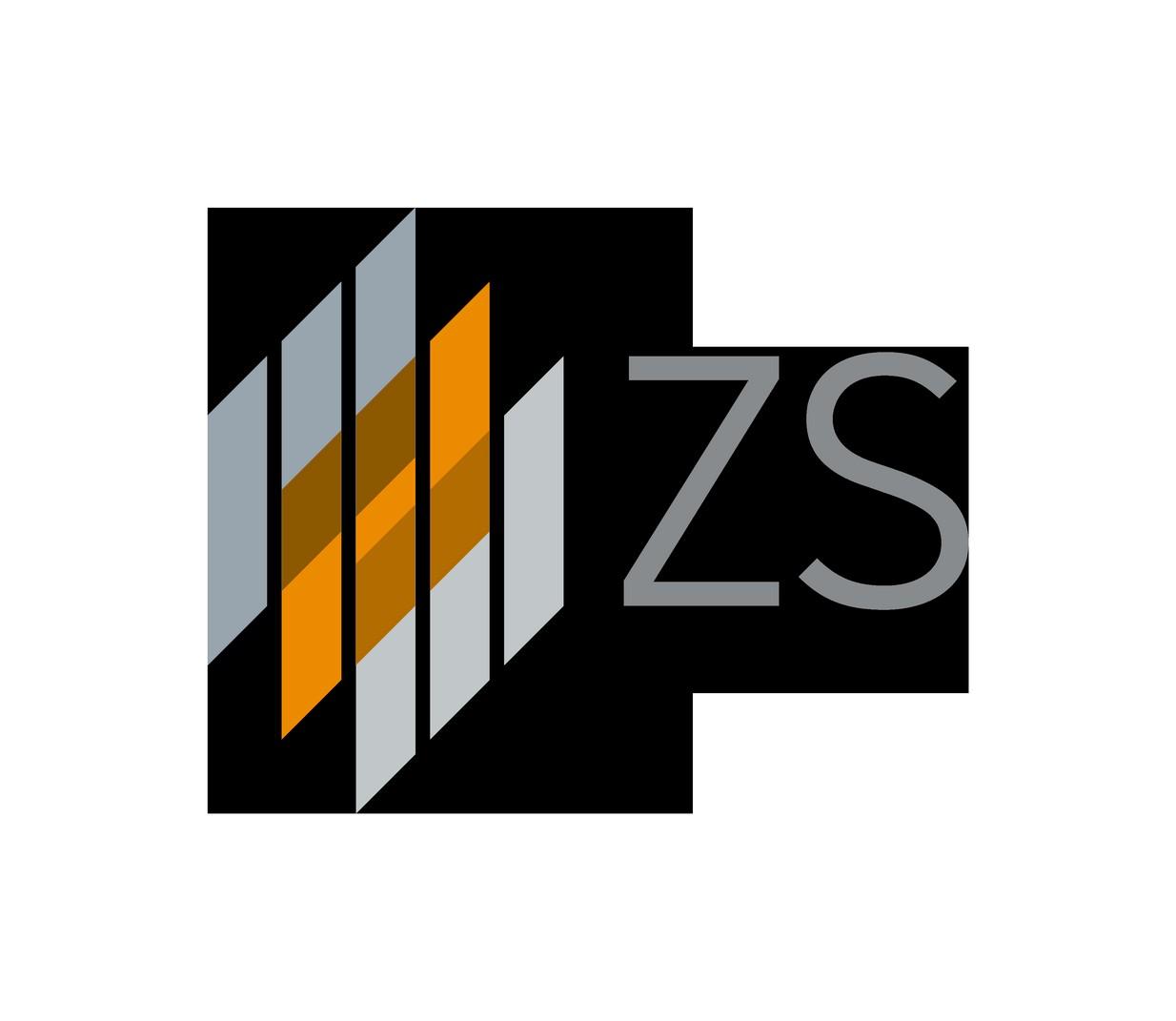

Cheers to Our Beta Testers!
Your feedback made this launch possible. We couldn't have done it without you!
Thank you for being part of our success story!





Stretch & Afternoon Break



Hot Topics in Myeloma



Joseph Mikhael, MD, MEd, FRCPC, FACP

Engage and Partner with the IMF


Sylvia Dsouza IMF VP Development

Vice President of Development for the IMF
WHO AM I WHAT DO I DO?
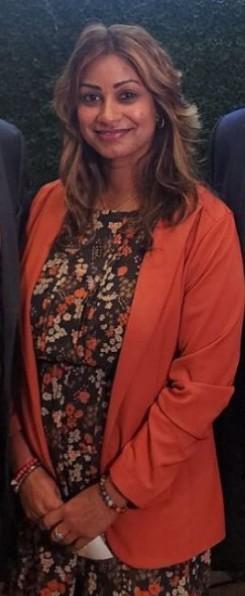
Securing philanthropic support and resources for the IMF through diverse mechanisms
Oversee a team of passionate and determined fundraising professionals who are committed to advancing the mission of the IMF
Have the incredible honor of working with dedicated volunteers from the US and across the globe.
3 Ways to Engage
Philanthropy
• Make a philanthropic gift to support research, education, advocacy or patient support programs.
• Organize or participate in fundraising events such as walks, runs, golf tournaments, community block parties, or galas.
• Create a fundraising campaign online to raise awareness and funds.
Volunteer
• Join your local support group/become a Support Group Leader
• Join our grassroots patient Advocacy program
• Volunteer your time at local races organized by the IMF to engage the community
• Engage on social media to connect with others affected by myeloma and spread awareness and empower patients with knowledge and resources.
Intellectual capacity
• Offer your expertise as a speaker or panelist at events.
• Be a beta tester for various new tools and products and provide reviews and feedback


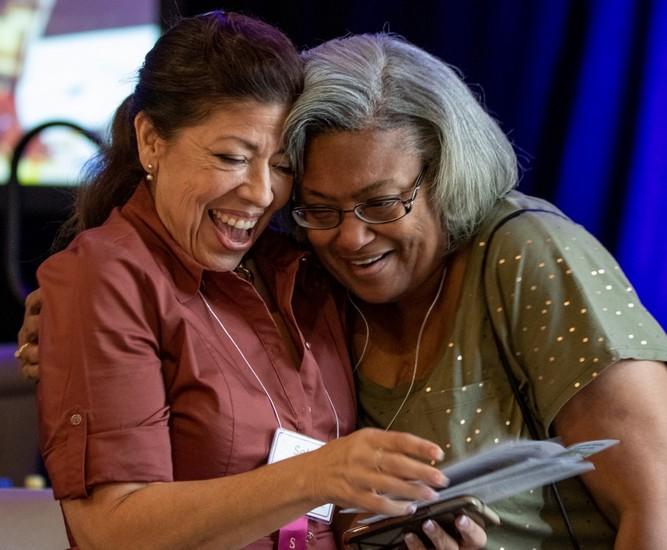
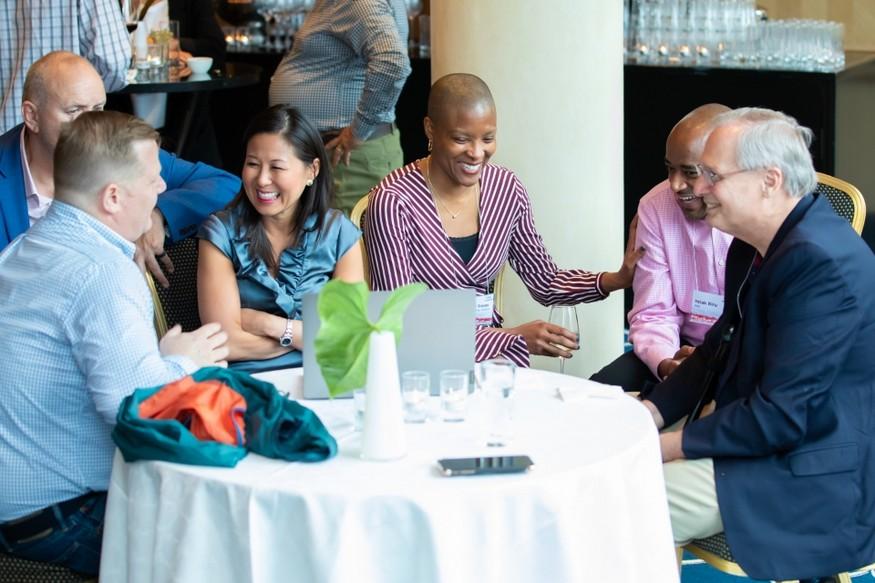
Philanthropy Fuels Our Mission
Peer-to-Peer Fundraising
• Peer-to-Peer Fundraisers are created from YOUR ideas. Starting a Fundraiser is easy and fun. They also make a world of difference in the myeloma community.
• Engage your family, friends, co-workers, your network who honor your journey with myeloma and want to support you. Let them show you that you are not alone.
Join the HOPE Society (Recurring Monthly & Annual Giving Program)
• Help us cultivate the future by joining the International Myeloma Foundation's Hope Society.
• Monthly and annual gifts support IMF core programs, including educational events, publications, the toll-free InfoLine, and more.
• Start with a monthly contribution and when ready turn it into a yearly commitment. You will be a part of likeminded individuals united in the quest to find a cure for myeloma and a better quaity of life for all myeloma patients.
Transformative Gifts (Major Giving and Principal Giving)
• Gifts can be designated toward a specific program, project or initiative .
• Is there something specific that resonates deeply with you and you want to see change happening?

• Gifts can also be unrestricted, expendable and/or an endowment



Peer-to-Peer (P2P) and Monthly & Annual Giving
P2P
• Laughs 4 Life -- 8 years, $483,850!
• Miracles for Myeloma -- 12 years, $804,422!
• Iceland Cycling Expedition-- Inaugural Event and opportunity to be a part of a group of patients, doctors, nurses to train together, bike across Iceland and raise money to support iStopMM cure trials.
• Hole In One – Inaugural golf tournament that has raised almost $40k in three months.


Monthly & Annual Giving – HOPE Society
• Join our flagship monthly and annual giving program, the HOPE Society.
• Get invited to Regional Salon Dinners in your area with IMF leadership and KOLs.
• Receive exclusive updates on research and trials fresh off the press.
• Play a pivotal role in supporting our four pillars.
• Support long-term initiatives that make a lasting difference.

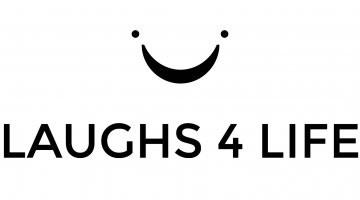
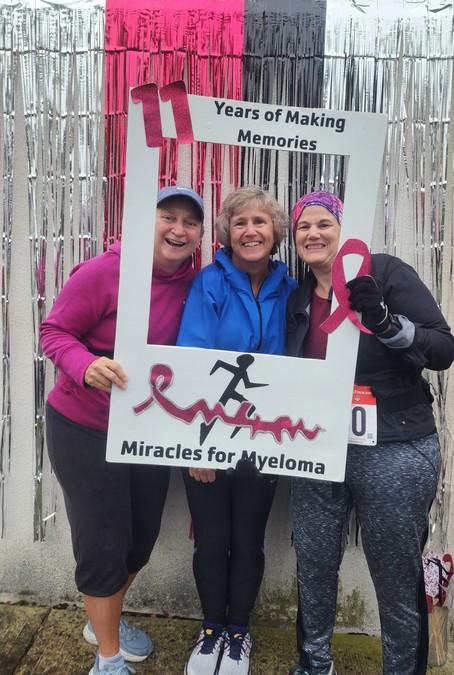

Major Giving - Black Swan Research Initiative
The Black Swan Research Initiative was funded by a Board member/donor who was a visionary and saw the need for the IMF to launch this initiative

The IMF's Black Swan Research Initiative serves as a conductor of sorts to this orchestra of collaborating experts in the field of myeloma. The BSRI sponsors more than 50 projects around the world aimed at curing multiple myeloma. Among them:
SPAIN: The CESAR trial uses the combination of Kyprolis, Revlimid, and dexamethasone plus autologous stem-cell transplant to treat high-risk smoldering multiple myeloma. It applies: precise mininal residual disease (MRD) testing using next-generation flow cytometry (NGF) and Blood testing for routine monitoring
USA: The ASCENT trial tests early intervention in high-risk smoldering multiple myeloma.
ICELAND: Launched in 2016, the iStopMM project identifies and treats multiple myeloma at the earliest signs of disease.
GERMANY: Studies are exploring long-term survival and hereditary risk factors in multiple myeloma.
AUSTRALIA: Identifying mechanisms of the progression of multiple myeloma and t esting DNA mutations in the blood.
SINGAPORE: Hub for the clinical trials network in Asia led for the IMF’s Asian Myeloma Network (AMN) program by Prof Wee Joo Chng. A collaboration of eight countries (or regions), the AMN is unique in providing access to novel agents in a clinical trial setting throughout Asia. In addition, research projects appropriate for the region are conducted in an effort to improve outcomes and achieve a cure.

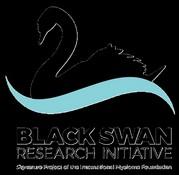

What will your Legacy be?
Planned Giving
• Join the Brian D. Novis Legacy Society and make a planned gift!
• Gain immediate tax benefits
• Potentially increase your income during your lifetime.
• Continue to fund our core programs and four pillars.
• Make a bequest (a gift from your estate)
• Include a provision in your will or living trust.
• Designated us as a beneficiary of a life insurance policy, or retirement plan (IRA, 401(k), or 403(b).

• Leave us in your will is one of the most profound ways to support the people and causes important to you.
Corporate and Foundation Gifts
• Your organization can contribute a corporate gift or foundation grant
• Provide seed funding that is necessary to accelerate the path to a cure.


Support Group Leaders Summit 25th Anniversary

We reached our goal of $250,000!
• You all helped us do this - THANK YOU!
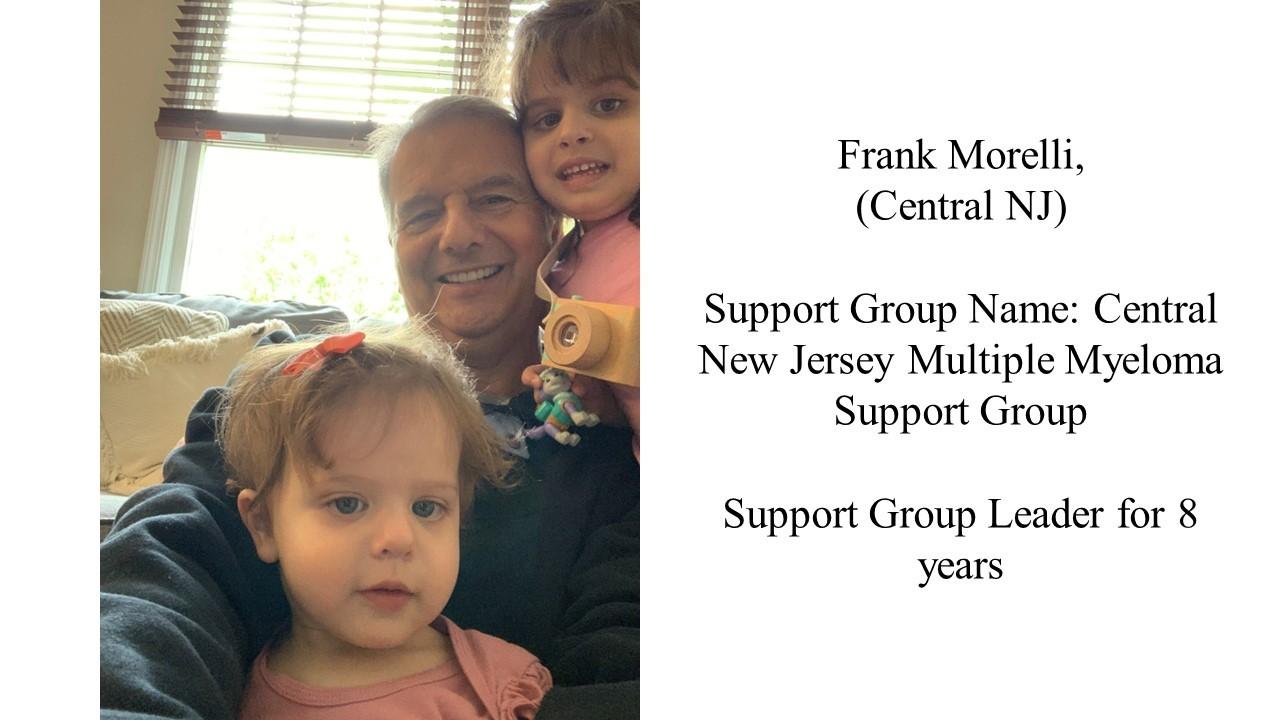
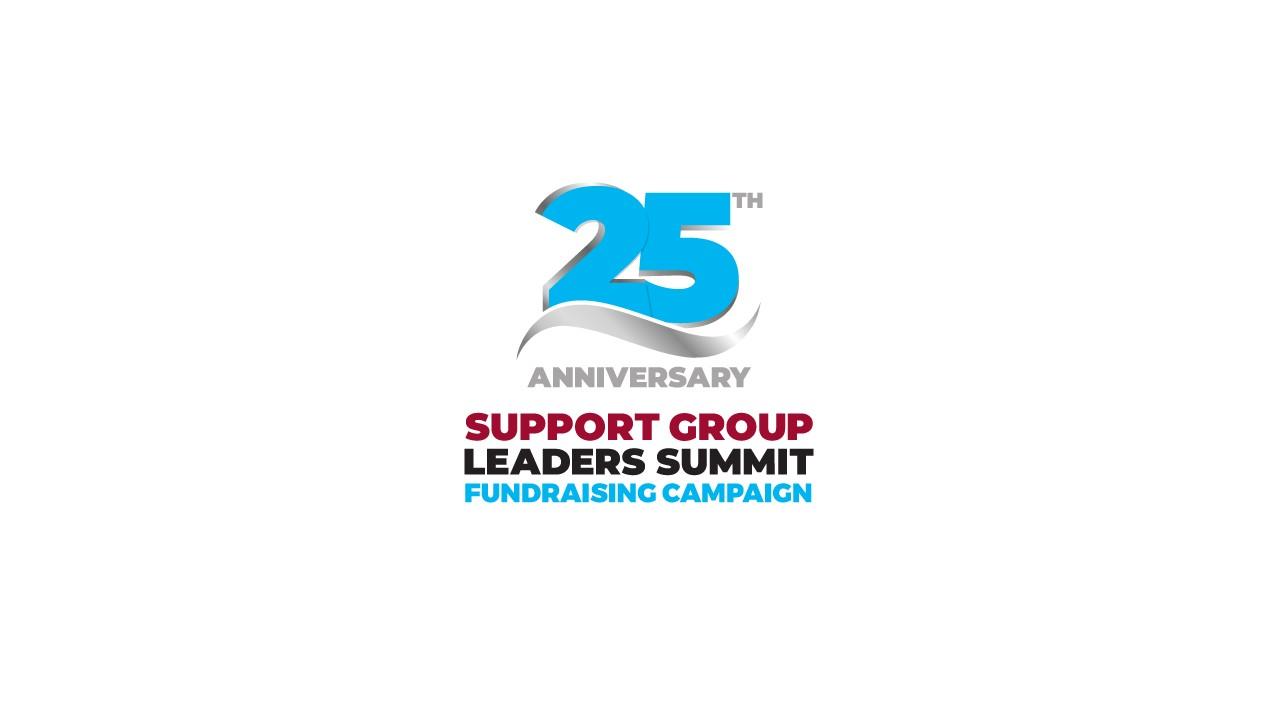

"The Support Group Leaders Summit has empowered me to network with leaders nationwide, learn from their experiences, and appreciate the dedication of the International Myeloma Foundation (IMF) to patients, caregivers, and families affected by myeloma."

Start the Conversation

We welcome you to continue to learn more about our programs, projects, and initiatives at the IMF and find alignment with your own myeloma journey as well as ways to deepen and strengthen your engagement with us. Reach out to the IMF Development Team to start a conversation on how you can make a difference in the lives of the people impacted by myeloma.

Sylvia Dsouza Vice President, Development sdsouza@myeloma.org (310) 947.4126

Kate Fitzpatrick Assistant Director, Monthly and Annual Giving kfitzpatrick@myeloma.org (818) 487-7455 x 303


Kimberly Francis Assistant Director, Peer-to-Peer Fundraising kfitzpatrick@myeloma.org (818) 487-7455 x304

Matthew Broughton Assistant Director, Operations mbroughton@myeloma.org (818) 487-7455 x299
QUESTIONS?


Day 1 Recap
Announcements and Evaluations

4:00PM-Open Options (60 minutes)
Please attend the option you selected:
• Care Partners (Hill Country G)
• Patients (Main Ballroom) OR
• Networking by the Pool and Relaxing
6:00

BCAM 2024:
How Can You Help? A Challenge We Pose to YOU!
Our company's social media accounts can only reach so far. We need your help to spread the word about myeloma and make a real impact. Here's a challenge for this weekend and beyond…:
• Engage: Like, comment, and repost content from the IMF's social channels to increase visibility.
• Share: Share something from the SGLS -photo, something that moved you, tips you’ve learned, etc. -- and be sure to hashtag #kNOwMyeloma
Together, we can raise awareness and support those affected by this disease!! Thank you!



Please use this QR code for Friday's






Thank you to our Donors

